“Insanity: doing the same thing over and over again and expecting different results.” – Albert Einstein
In 2019, Javi Gracia guided Watford to an 11th-place finish in the Premier League, the highest in the club’s history in the competition. Added to this, the Hornets also reached the FA Cup final where they faced league champions Manchester City, although the less said about the final score, the better.
Nevertheless, at the beginning of the following campaign, things began to go west pretty quickly. Gracia was rewarded for his heroics in the previous season by being handed just four games of the 2019/20 campaign before being brutally chopped by the bloodthirsty hierarchy.
What was to follow was nothing short of disastrous as Watford finished the season second from bottom, with their fourth head coach in charge. At least the Championship would offer the London club the chance to reset and get a manager in with the aim of taking them back to the promised land.
That man was Vladimir Ivić who was handed a one-year contract to take over at the helm. The Serbian coach would serve just four months of this deal before being sacked with the club sitting fifth from 24 teams in the second tier.
Xisco Muñoz eventually came in and did actually manage to get Watford promoted — another Spanish coach, but with a great previous track record of playing some scintillating stuff.
Muñoz quickly became a fan favourite and despite a rocky start to their first season back in the Premier League, the board learned their lessons from the past and stuck with him through thick and thin. Only joking, he was dismissed with Watford sitting in 14th.
Two incredibly experienced coaches came in to try and keep the team afloat but ultimately failed. Claudio Ranieri was first up but lasted merely two and a half months.
Then, Roy Hodgson came out of retirement to replace his somehow younger predecessor. Sadly, it wasn’t to be. Hodgson took the ship down. Watford were back in the Championship.
It was another great opportunity to reset for the Hornets and try to build a team worthy of promotion to the Premier League. Exciting young coach Rob Edwards was handed the reins. A fresh new face with new players — what could go wrong?
Need we even mention what happened to him? At the end of September, Slaven Bilić, the former West Ham United boss, took over and, as you may have guessed, as of writing this piece, Chris Wilder has just been announced as the new manager of Watford Football Club.
In this tactical analysis piece, we will take you on a trip down memory lane, looking at Watford’s managerial merry-go-round since Gracia’s dismissal. It will be an analysis of the different tactics used by each manager during their short stints.
Chances are, by the time this team scout report is published, there may be a new man in the dugout.
Gracia’s stability – 2018/19
The 2018/19 season is the only campaign where Watford kept the same man in charge for its entirety. Since then, there have been two to three different coaches in the dugout on average.
Gracia’s football highly suited the players that were available at his disposal too. Where Marco Silva before him switched between a 4-2-3-1 and a 4-3-3 to relative success, Gracia was a proud proponent of the 4-4-2, although he did also try out a plethora of different shapes during the course of the 2018/19 campaign.
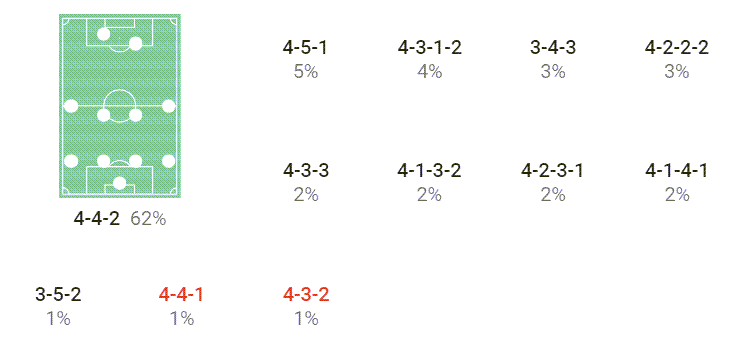
There are principles which have been constant throughout Gracia’s managerial career and his predominant use of the 4-4-2 is one of them.
Not only that, but Gracia also loves to create central overloads to free up the fullbacks. The two wingers in the 4-4-2 would tuck inside next to the strike pairing so Watford had four players positioned between the lines. In turn, the opposition would be forced to narrow their defensive block to squeeze the passing lanes to these players which left space out on the flanks for the wide defenders.
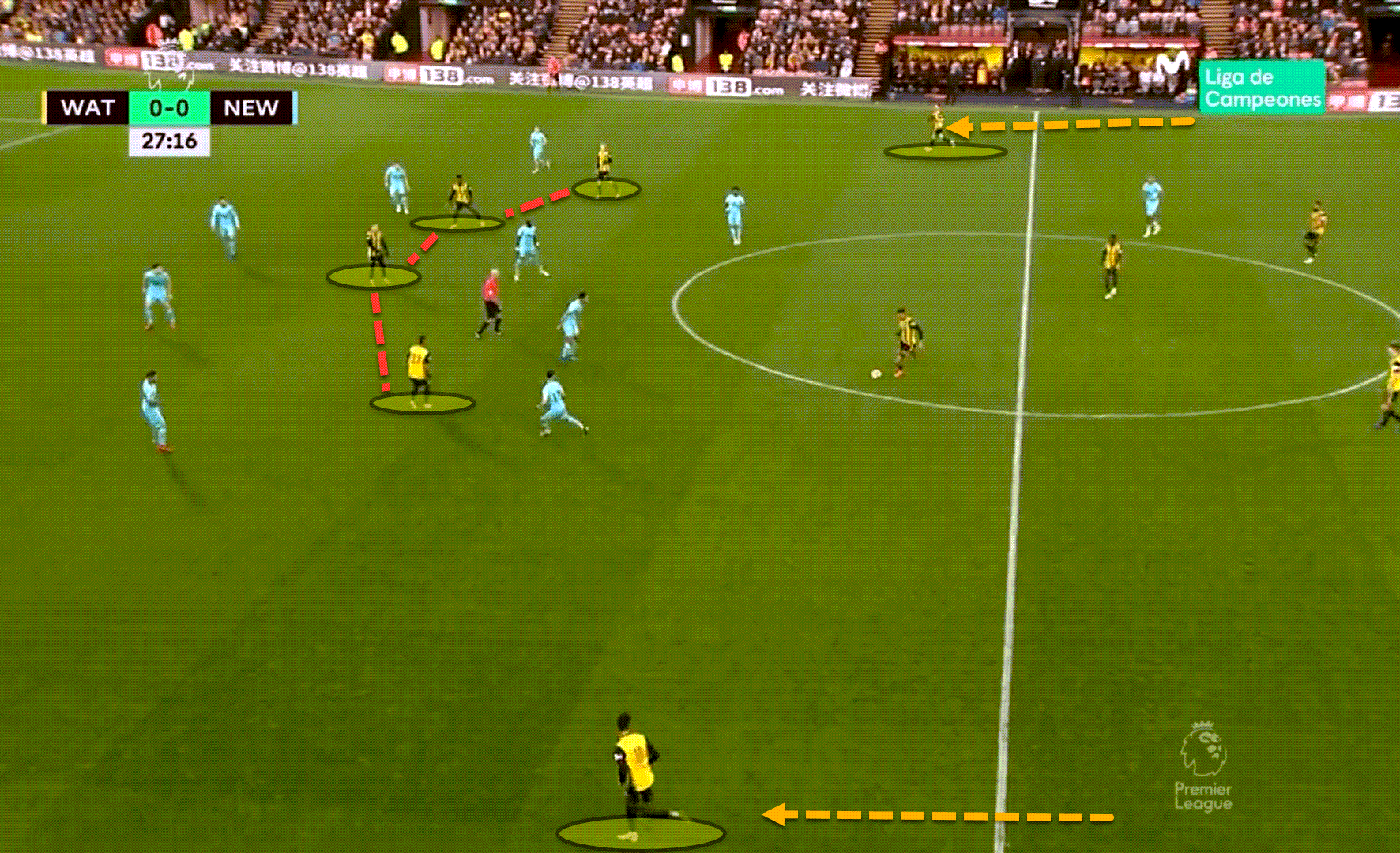
Defensively, Gracia was keen for his players to press high up the pitch. However, the 2018/19 season was the last campaign that centre-backs had to stand outside the penalty area. That very summer, the new rule goal-kick rule was introduced where the team who had possession of the ball could stand inside the box, encouraging teams to play out from the back.
Before then, quite a lot of teams still played long from kick-outs and so there were many games where Watford didn’t press high. Instead, they were happy to sit back and defend in a mid-block, usually in a 4-4-2 shape which is evident from the team’s average defensive line height that very season.
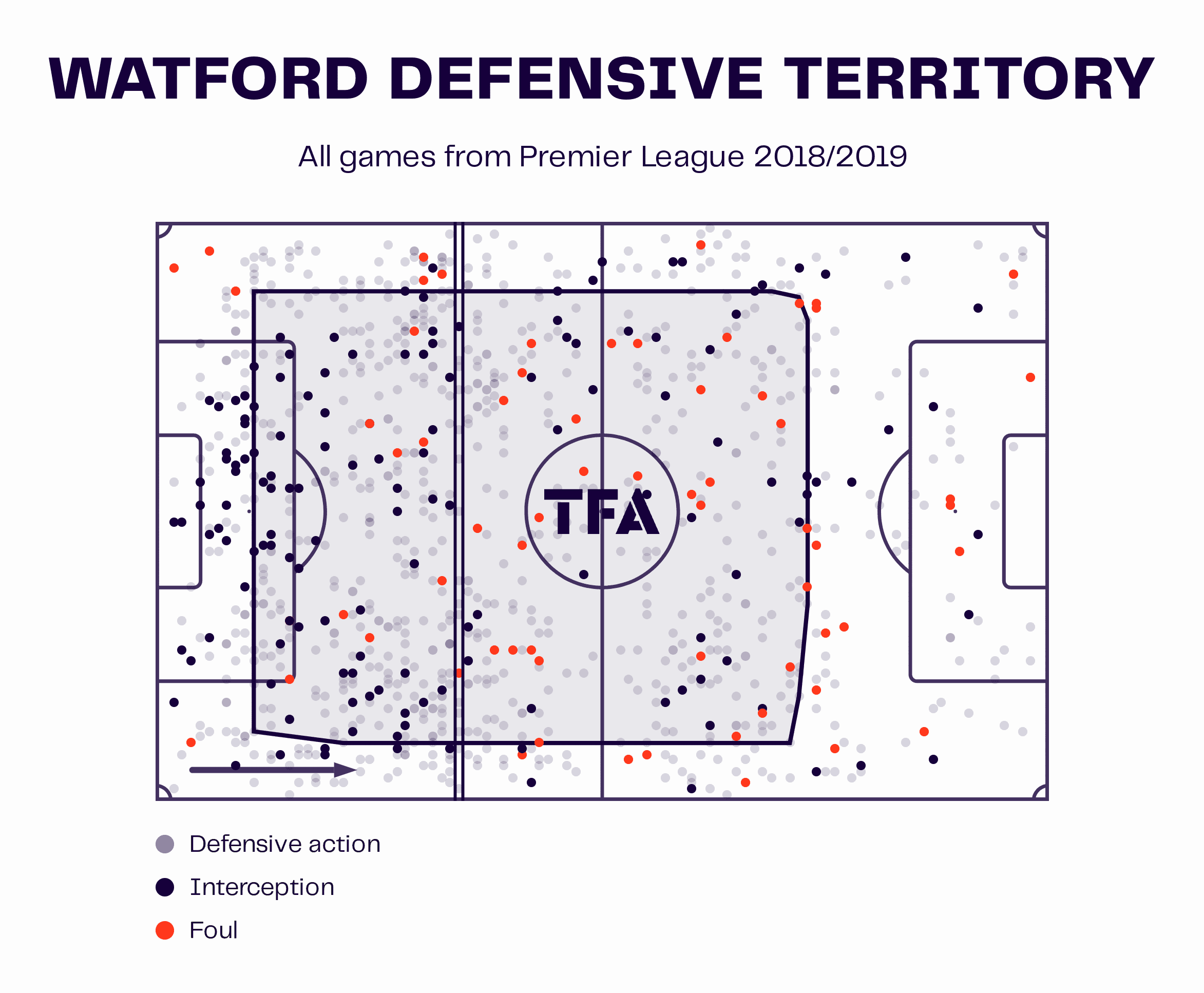
Unfortunately, Watford were quite leaky at the back and boasted one of the worst defences in the division, conceding an average of 1.45 goals per 90 whilst scoring 1.28 under Gracia. This was a sign of what was to come at the beginning of the next season when goals dried up.
After just four games of the 2019/20 season, Watford had scored twice and conceded nine goals in total, losing thrice. The side also faced an xG of 7.1 in that tiny timespan.
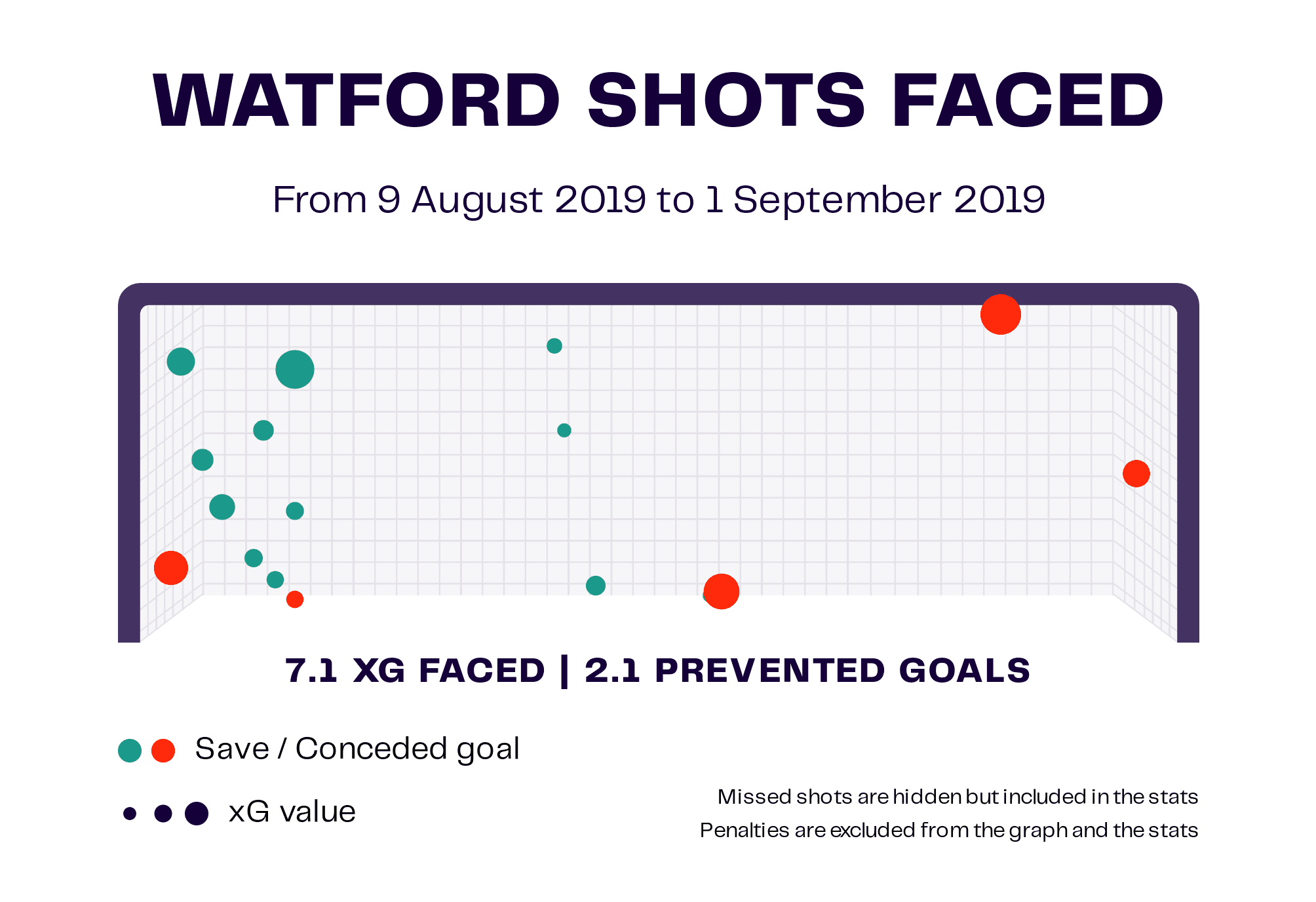
Following a close 1-1 draw with Rafael Benítez’s Newcastle United at St. James’ Park, Gracia was dismissed. His replacement was a familiar face for the Vicarage Road faithful.
Relegation – 1st edition – 2019/20
After what was a terrific season the year prior, not many would have expected the carnage that would unfold in Hertfordshire throughout the 2019/20 campaign.
Quique Sánchez Flores was handed the reins, a man who guided Watford to a respectable 13th place and helped to gain some stability for the club during their first season back in the Premier League since 2006/07.
The first change that QSF made from a tactical standpoint was to change the base formation of the team. Having been in love with the 4-4-2 for the last eighteen months, the new boss switched things up permanently, preferring to deploy a rigid 3-4-3 or a 3-5-2 at times as well which saw Watford drop into a 5-4-1/5-3-2 when defending lower down the pitch.
Just like under Gracia, Watford primarily defended in a mid-block, staying really compact in the middle of the pitch and between the lines, shuttling play out wide to press aggressively on the flanks, but the Hornets were also not afraid to drop into a deeper defensive block.
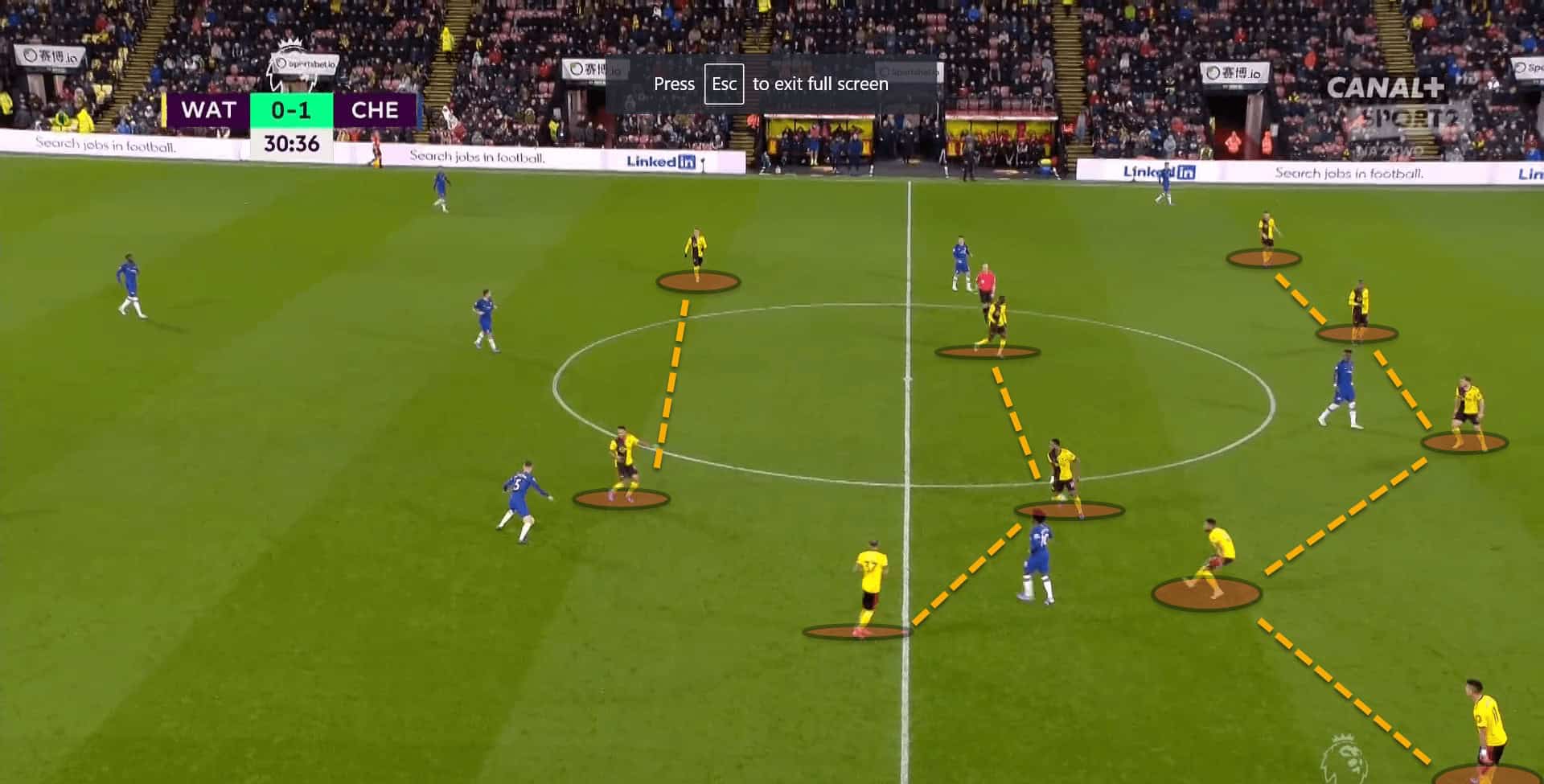
Defensively, though, it was a shambles. Watford shipped 23 goals in QSF’s twelve games in charge, an average of 1.92 per game which is far from ideal, although this was inflated as it included an eight-goal humiliation suffered at the hands of Manchester City at the Etihad Stadium.
But on top of this, Gracia’s successor did not manage to get his side firing on all fronts again to mask the defensive deficiencies. While there was a slight improvement in goals, having bagged nine in his 12 matches at the helm, the team lacked serious goalscoring quality at the top of the pitch and greatly underperformed their xG during his reign.
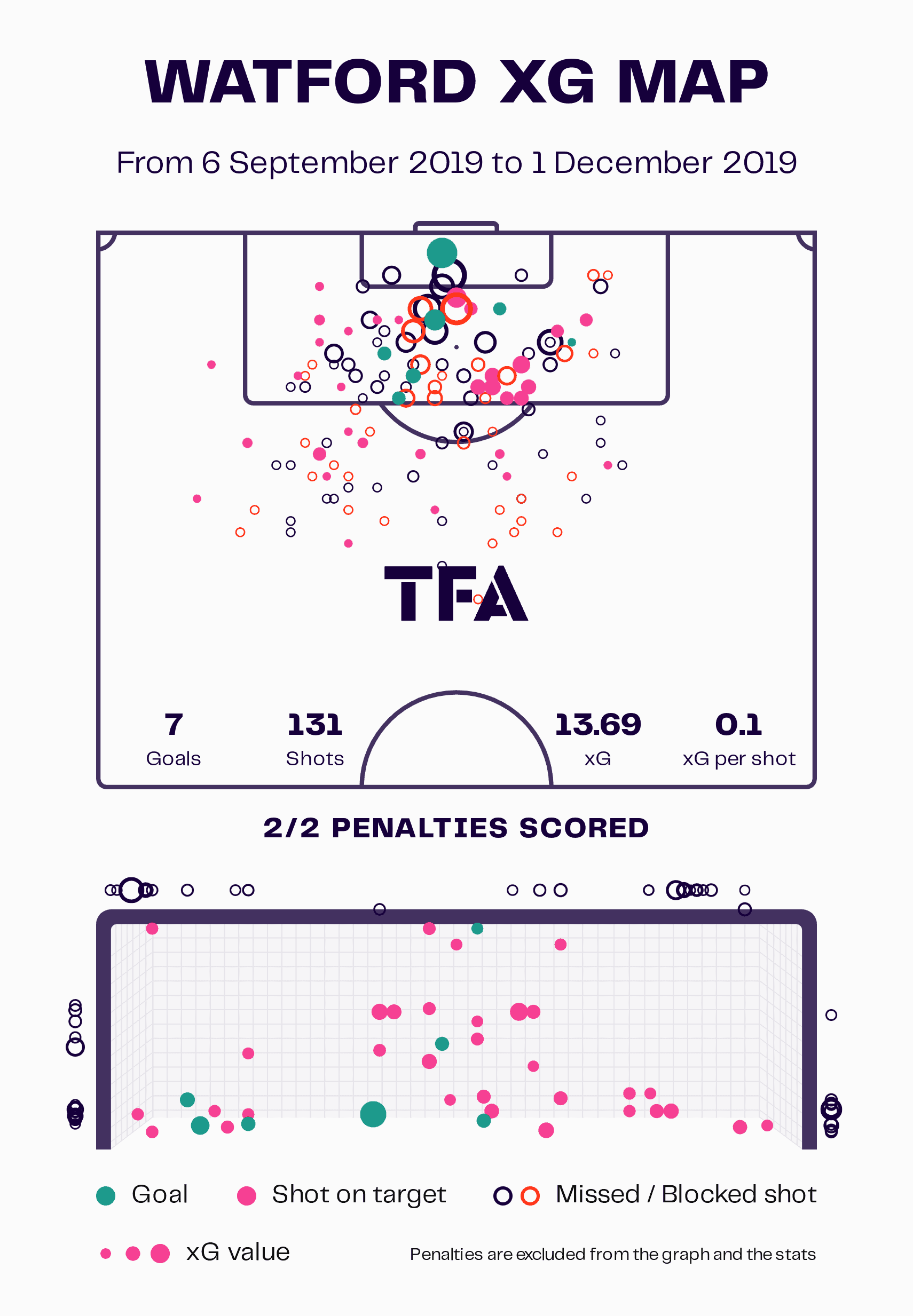
Following a 2-1 defeat to Southampton away from home, Quique Sánchez Flores was dismissed, having picked up just one league victory in his second stint.
The man that would replace him was someone with a pedigree of pulling off a great escape during his time with Leicester City.
Nigel Pearson took charge at Vicarage Road, becoming the third manager in four months to sit in the dugout.
Interestingly, when Pearson took over, with Watford boasting one of the worst defences in the Premier League, he decided not to drop the block lower down the pitch. Quite the opposite actually.
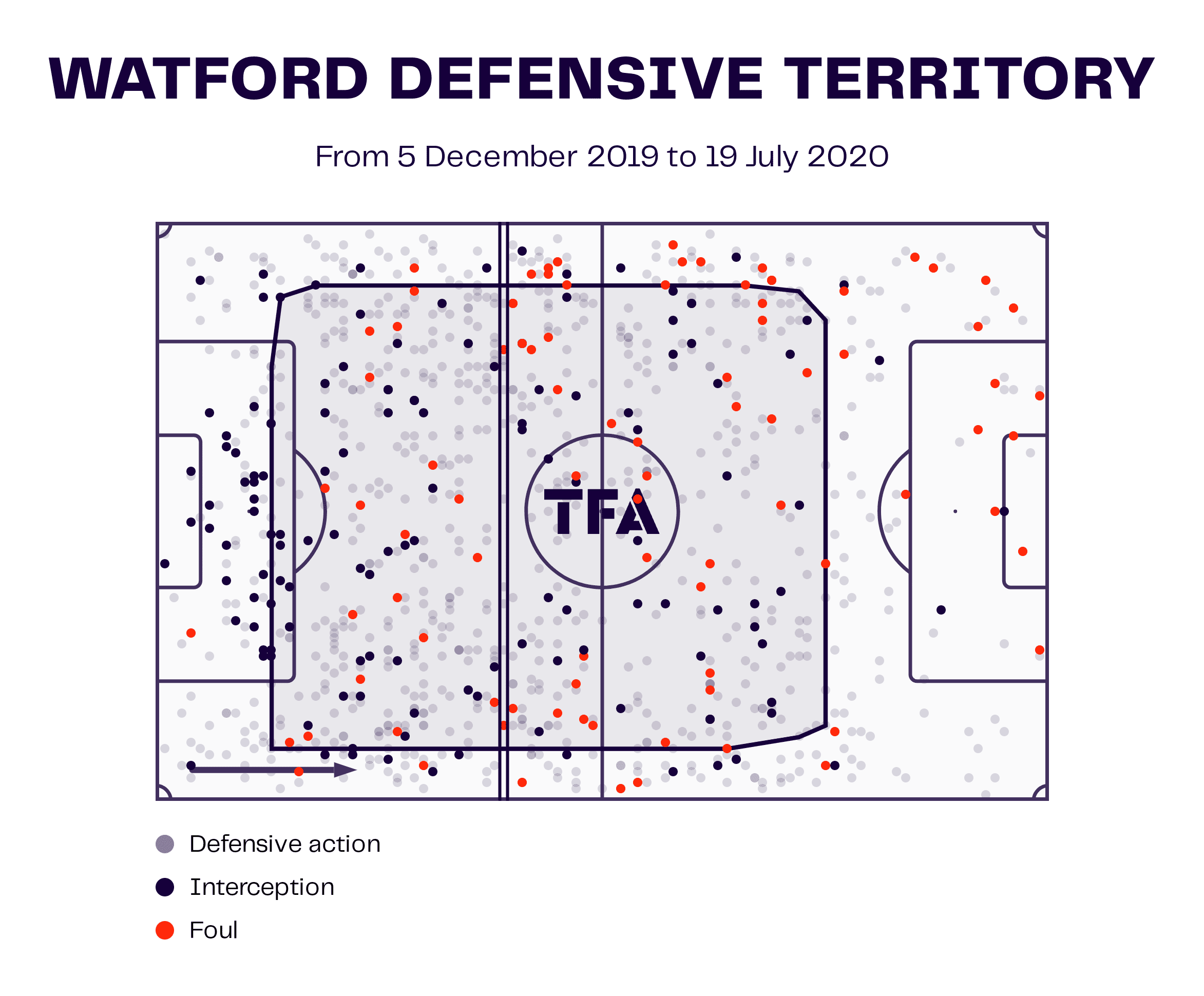
The Hornets pushed higher, pressed further up the pitch and were far more aggressive. On top of this, Pearson switched the formation back to the 4-2-3-1 as seen consistently from Marco Silva’s days.
Watford were a handful to play against. In his first game as manager, the strugglers gave league-leaders Liverpool a really difficult game at Anfield despite losing 2-0. However, it was merely twelve days later back on their own turf when Watford put Manchester United to the sword with a 2-0 win and were the better side throughout.
But it will be the impeccable 3-0 thrashing of Liverpool at home that many will remember Pearson’s tenure fondly for. The Reds were unbeaten in 45 league matches and had yet to lose a single match in the Premier League, on course for a first title in 30 years.
The blistering counterattacking pace of Ismaïla Sarr and Gerard Deulofeu and the powerful deep runs of Abdoulaye Doucouré who played as a ‘10’ carved Liverpool open on numerous occasions on that scintillating February night.
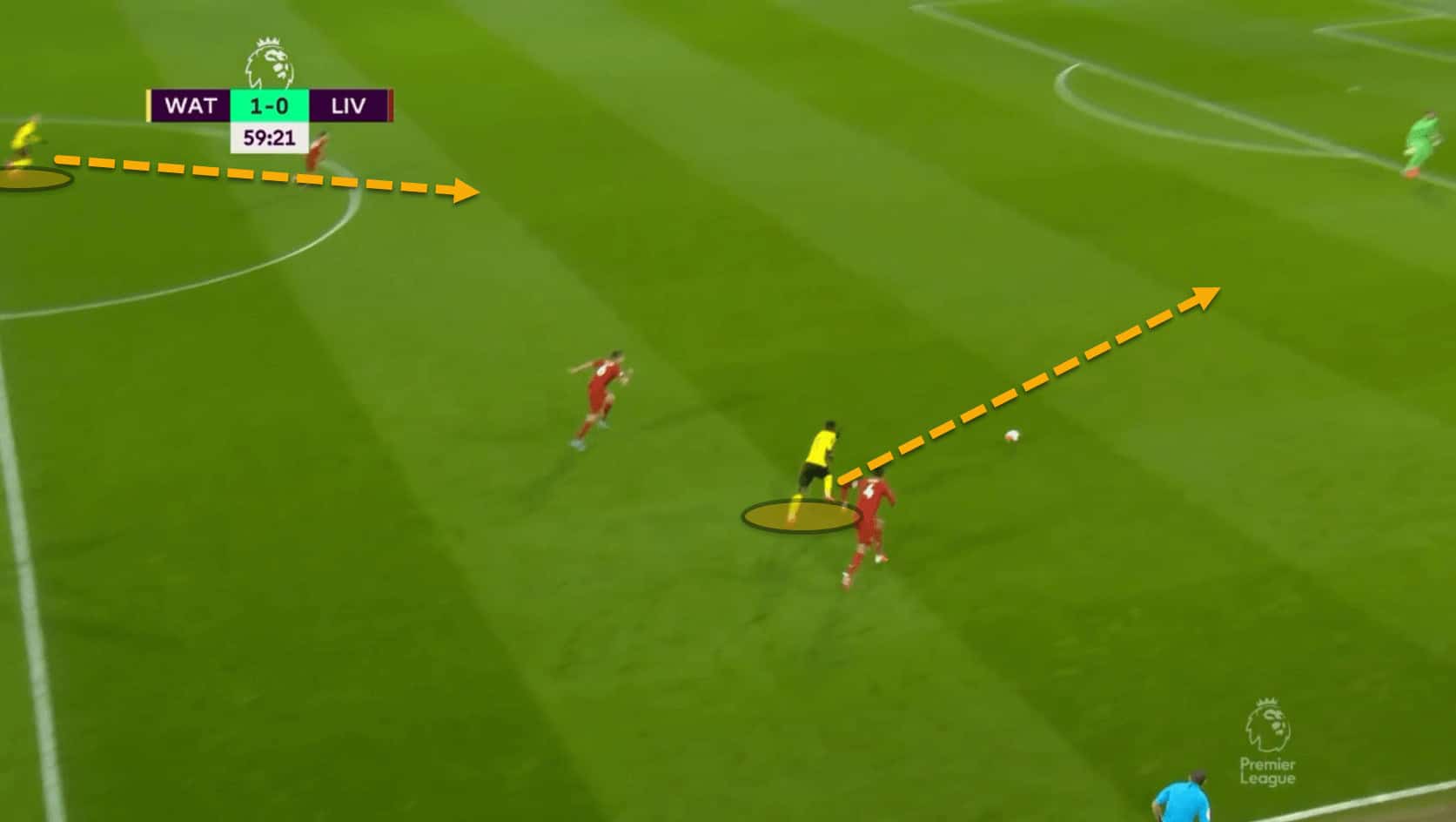
At one point in time, Watford were actually out of the relegation zone, and it looked as though Pearson was going to write his second volume of the great escape. Unfortunately, things went west pretty quickly.
Many pointed to Pearson’s stubbornness to change formation as one of the keys to Watford’s relegation, although this may just be one in a long list of problems at the club that season. Nevertheless, the former Foxes boss stuck with his guns and rarely reverted from his 4-2-3-1 that saw them climb out of the relegation zone in the first place a few months prior.
As the saying goes, “live by the sword, die by the sword.” In Pearson’s case, the sword cut right through him and his team.
The coach helped Watford become more potent in front of goal, creating a higher xG per shot than his previous two predecessors, although the Hornets were still underperforming their overall xG, but the gap was much smaller. Per 90 in the league, Watford were scoring 1.14 times which was noticeably better than under Gracia and QSF during the same campaign.
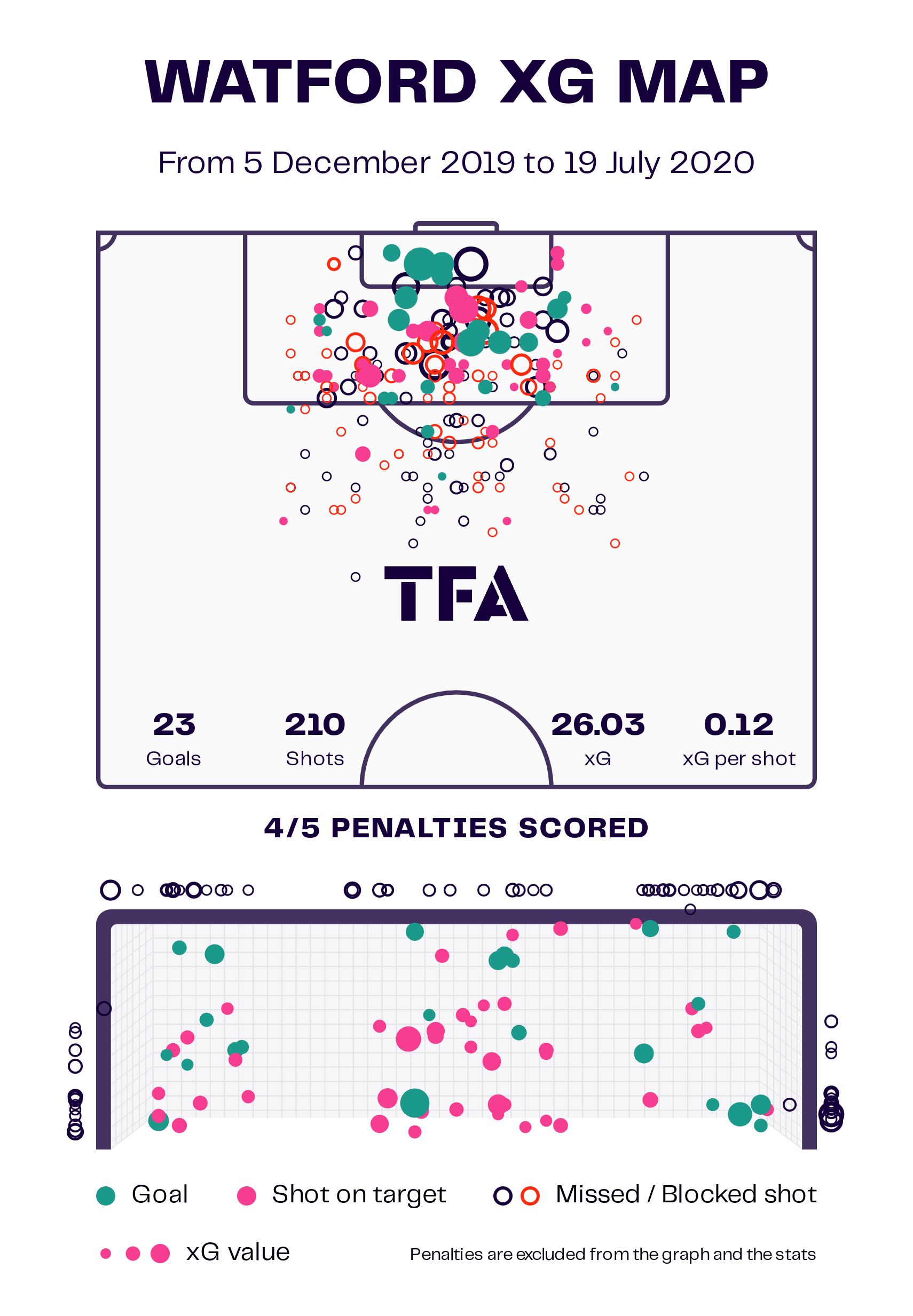
Goals were still being leaked at the back which ultimately led to Watford’s downfall over the course of the campaign. During Pearson’s reign in all competitions, the Hertfordshire club conceded an xG of 26.38 as well as 1.32 goals conceded per 90.
After defeat to West Ham, with three games remaining in the season, Pearson was dismissed as Watford dangled just three points below safety. He had a higher Premier League win percentage than any other head coach at Vicarage Road since the club were initially promoted in 2015.
It was certainly an eyebrow-raising decision and questions were becoming more and more targeted at the board, particularly the club’s owner Gino Pozzo.
U23s boss Hayden Mullins was placed in charge for the side’s remaining two fixtures against Manchester City and Arsenal. Watford’s faith was already sealed.
Back to life, back to the Championship – 2020/21
In the 2014/15 season, Watford made the decision to appoint Serbian coach Slaviša Jokanović who steered the side to promotion from the Championship to the Premier League. In 2020/21, the board wanted to go down a similar route.
Another Serbian manager was given the reins. This time, it was the relatively unheard of Vladimir Ivić who took charge. Ivić did an outstanding job with PAOK in Greece and especially Maccabi Tel Aviv, picking up two Israeli league titles in two seasons. But English football was a whole different ball game (not literally).
Again, Watford saw a formation change as Ivić opted to use a 3-5-2 during his spell in the dugout, a throwback to QSF’s tenure, although a 3-4-3 was quite common too.
During his stint in charge, the Hornets were quite reliant on crosses to create goalscoring opportunities.
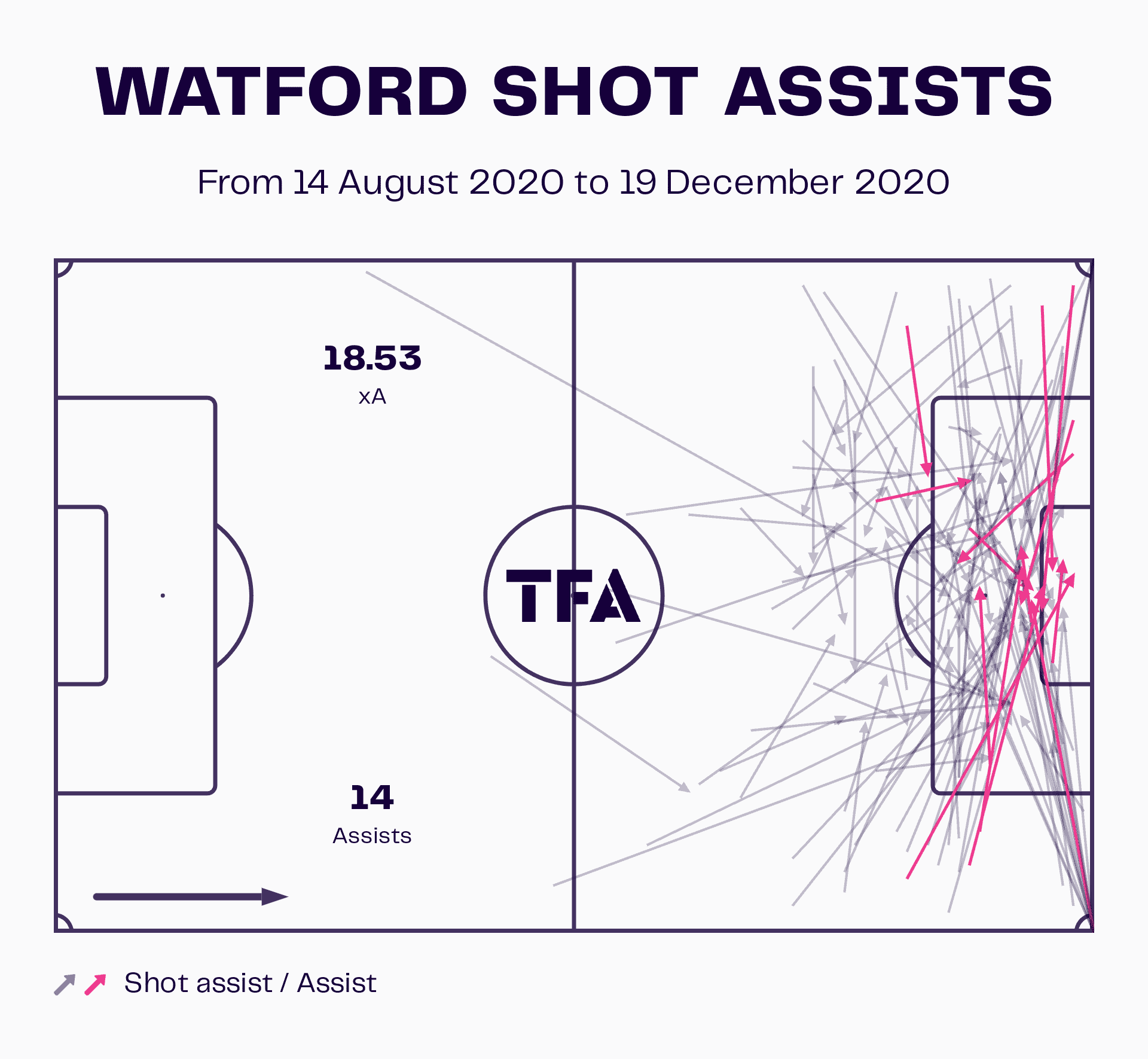
From the shot assists map, it’s evident just how many chances Watford created from the flanks. Crosses, both low and high, were the primary source of creating goalscoring chances for the Hornets under the former Partizan playmaker.
But one of the biggest issues during Ivić’s time at Vicarage Road was not only the lack of variety in Watford’s attacks but also that the team were greatly underperforming their xG, paying homage to the relegation campaign just a few months prior.
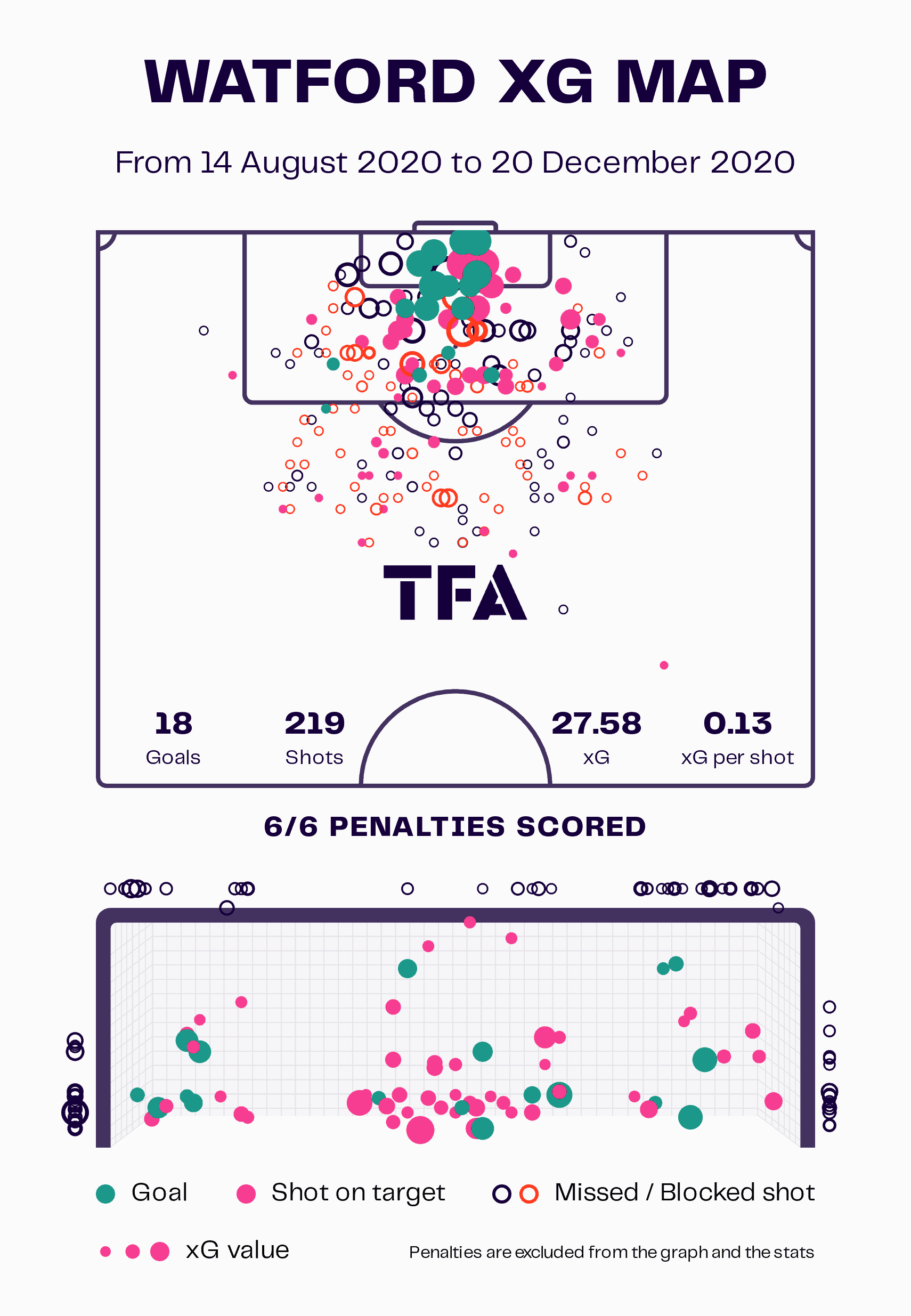
18 non-penalty goals from an npxG of 27.58 is quite worrying which can be seen from the team’s xG map. So many strikes were straight down the middle of the goal too, making it easy for the goalkeeper to keep out their chances.
Ivić was also heavily criticised by large sections of the fanbase for playing incredibly conservative football despite having one of the best squads in the Championship.
The manager was fine with allowing opponents to dominate possession against them and this is something that he admitted to wanting to move away from once the team eventually grew stronger:
“The tactics we use now are what we want to use for the first period of the season. We have a reason with how we play. I said from the beginning I want to play attacking football, with ball possession and to create this we need time. But now we need points.”
Ivić, an attacking midfielder in his day, sacrificed his beliefs for pragmatism. The team defended quite low down the pitch in a 5-3-2, using the wide central midfielders to engage the opposition’s fullbacks instead of having the wingbacks step forward out of the backline.
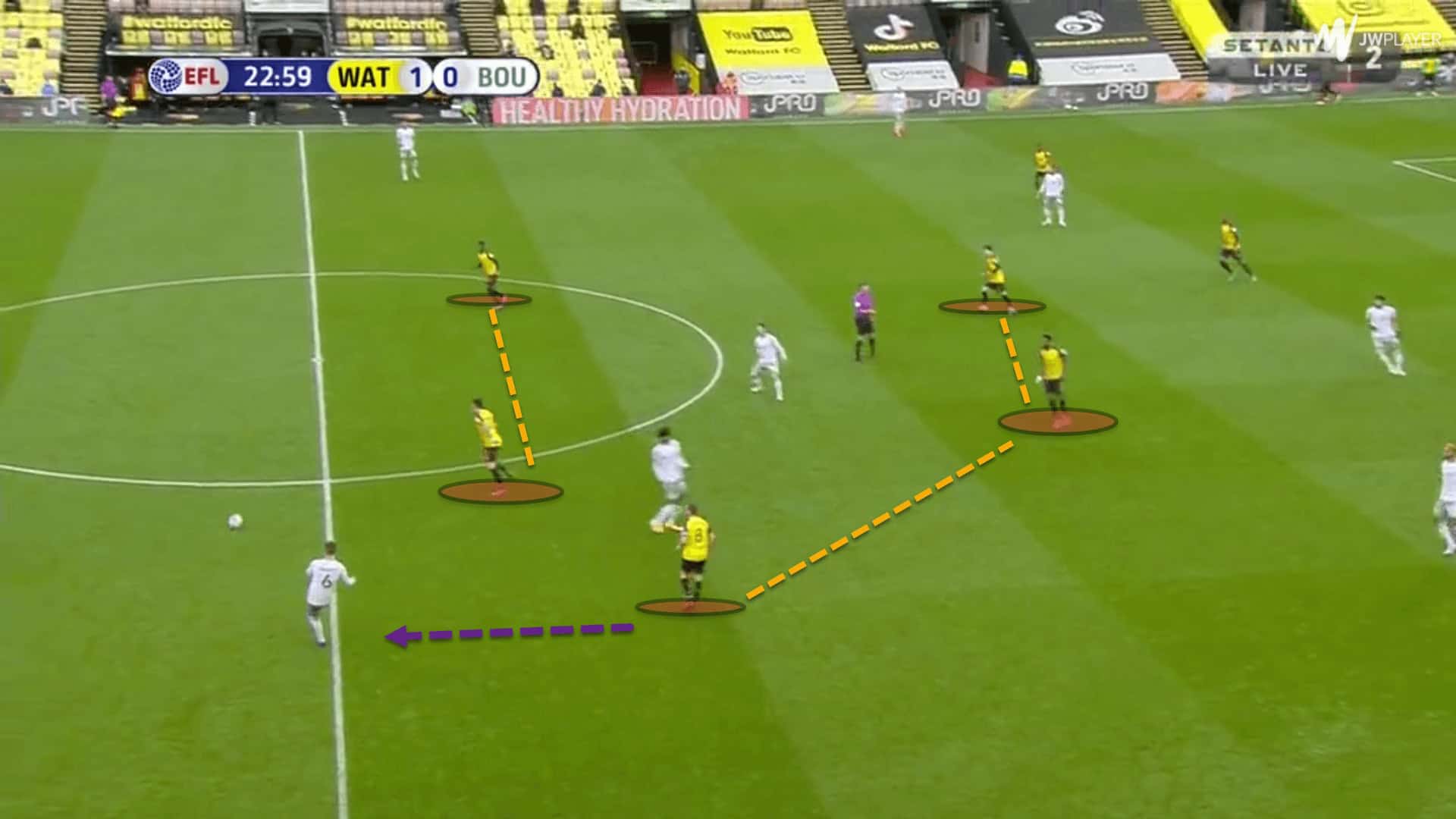
Ivić’s football was labelled boring by supporters. According to StatsBomb, just 1.9 goals were scored in total across both teams in any game that Watford played during his tenure.
Nevertheless, things weren’t hopelessly lost. The Hornets were still sitting in fifth place in the table. Perhaps Ivić just needed a little more time to play more expansively. Unfortunately, time is something that a manager won’t be afforded at Vicarage Road.
Javi Gracia, at eighteen months, is Watford’s longest-serving manager of the Pozzo reign of terror.
Ivić was dismissed, and his replacement was an even more obscure shout as Xisco Muñoz was given the nod. Dinamo Tbilisi was his only prior managerial experience and while he did incredibly well in Georgia, steering a misguided Hornet in the right direction was a much more difficult task.
One of the first tactical tweaks made by Muñoz was pushing the defensive block higher up the pitch, just as Nigel Pearson did a year prior.
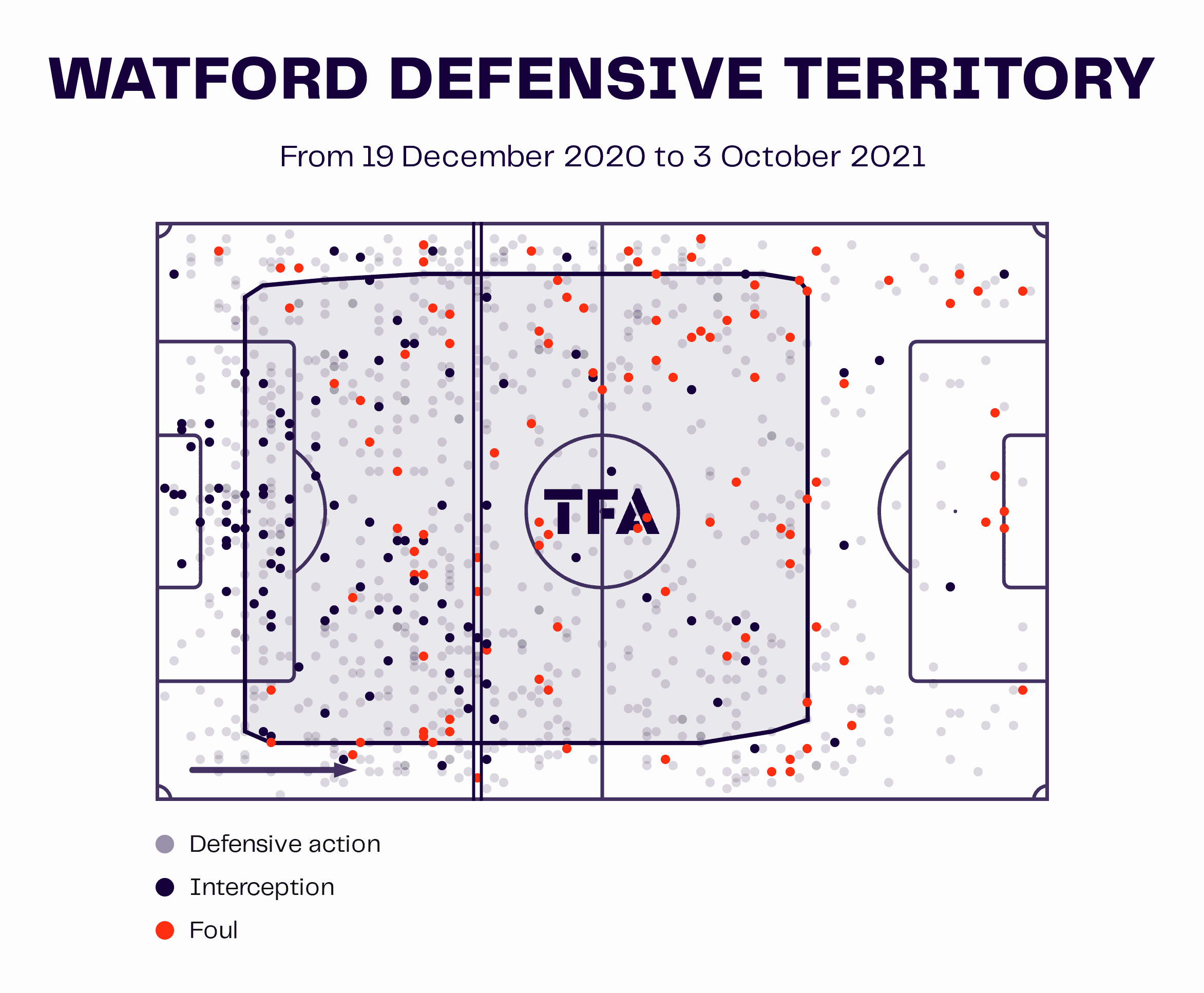
Watford were also much more aggressive when defending all over the pitch, hence why we can see so many fouls, particularly in the middle and final thirds.
At the end of the season, Watford’s challenge intensity stood at 6.8 which was one of the highest in the Championship. Challenge intensity is a metric that measures how many defensive actions a team makes per minute of opposition possession.
But it was in attack where Watford had their greatest transition. Where Ivić felt the team were not ready to become a possession-based side, Muñoz was not willing to wait. The transition was instant. Having averaged around 50% of the ball during Ivić’s spell in charge, this bumped up to 54.1% by the end of the campaign on average.
There were clear principles in possession under Muñoz and the Spanish coach was keen for his side to have a front line of five, all occupying the five horizontal lines of the pitch.
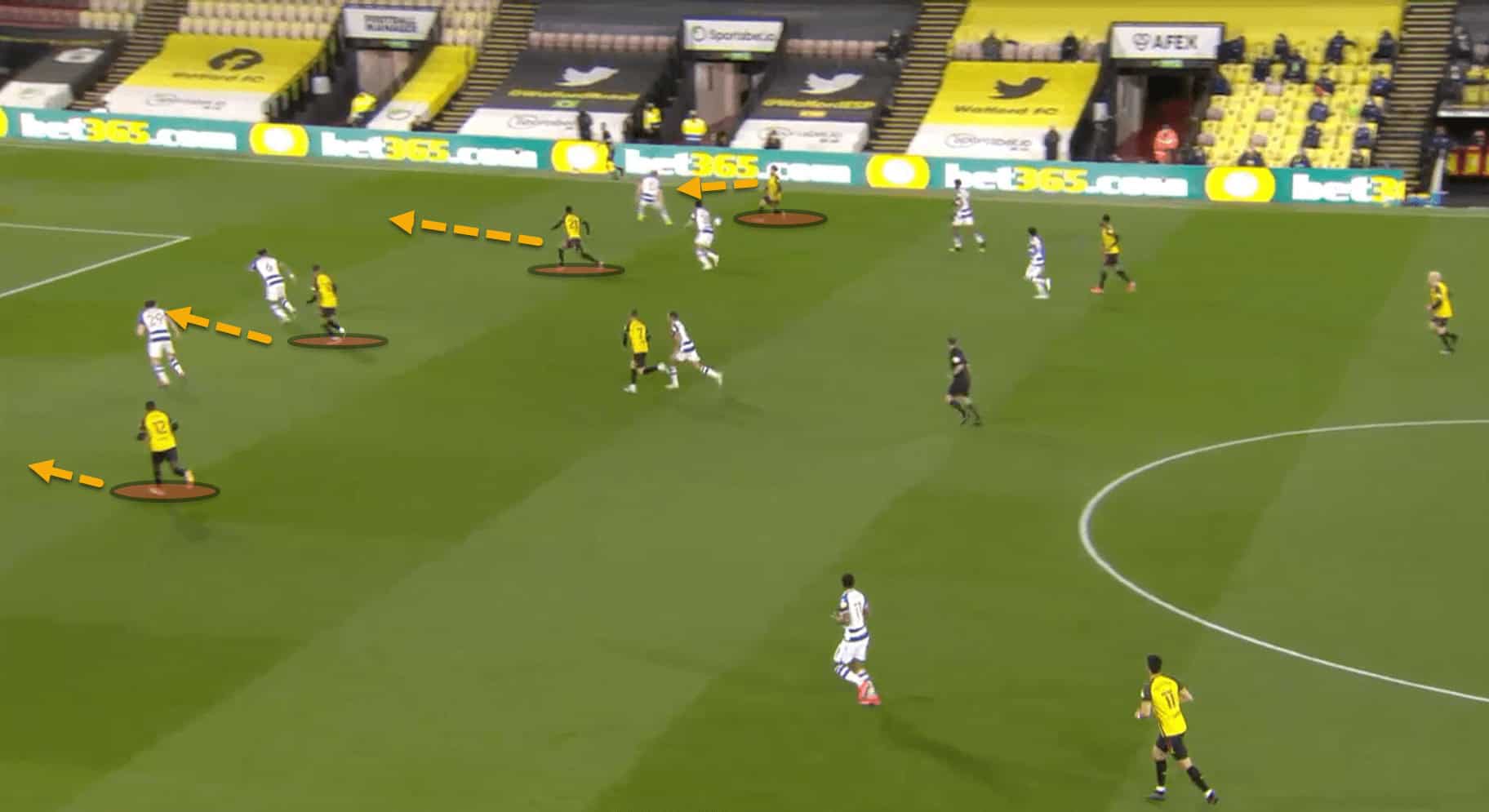
To create this line of five, Muñoz switched from Ivić’s 3-5-2 to a 4-3-3 which is more suited to playing a style of play adhering to positional play principles due to the triangles that can be created on the pitch.
The wingers would tuck inside, while the fullbacks would push high, switching the shape to what basically resembled a 2-3-5 or a 3-2-5 depending on whether one of the central midfielders dropped next to or between the centre-backs or not.
They were also far more dangerous in attack than under Muñoz’s predecessor. Instead of solely relying on crosses and counterattacks to score, the Hornets were far better equipped to make penetrating passes that split defences wide open.
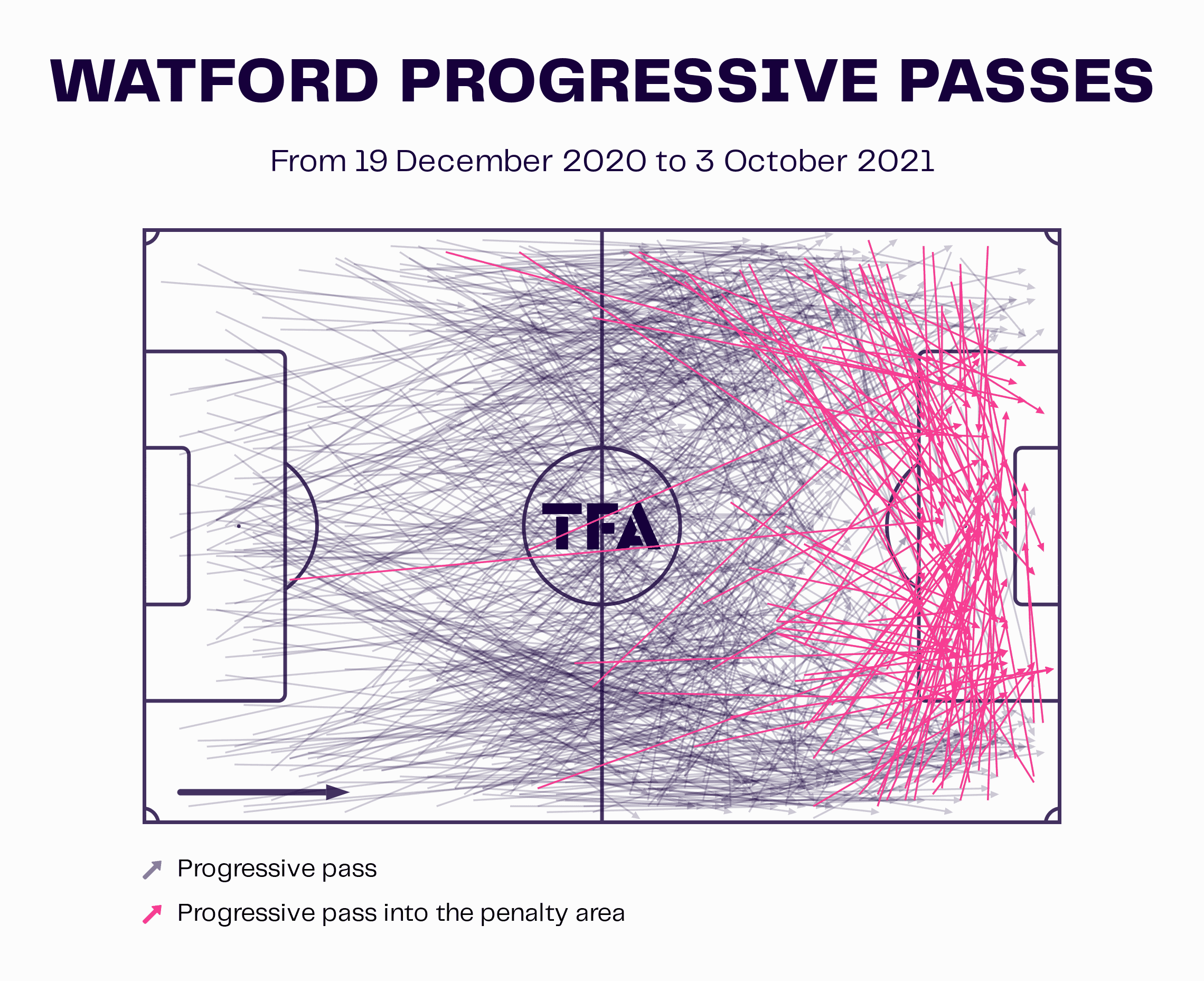
Over the course of Muñoz’s nine and a half months at the helm, Watford made an obscene number of progressive passes into the penalty area from the central channels, including the halfspaces. Players such as Tom Cleverley and Will Hughes were vital to playing this style as well as having the attacking runs of Sarr, Ken Sema and João Pedro in behind.
Their goalscoring also improved, although they did still underperform their xG by more than six goals. Nonetheless, it didn’t hinder their promotion hopes.
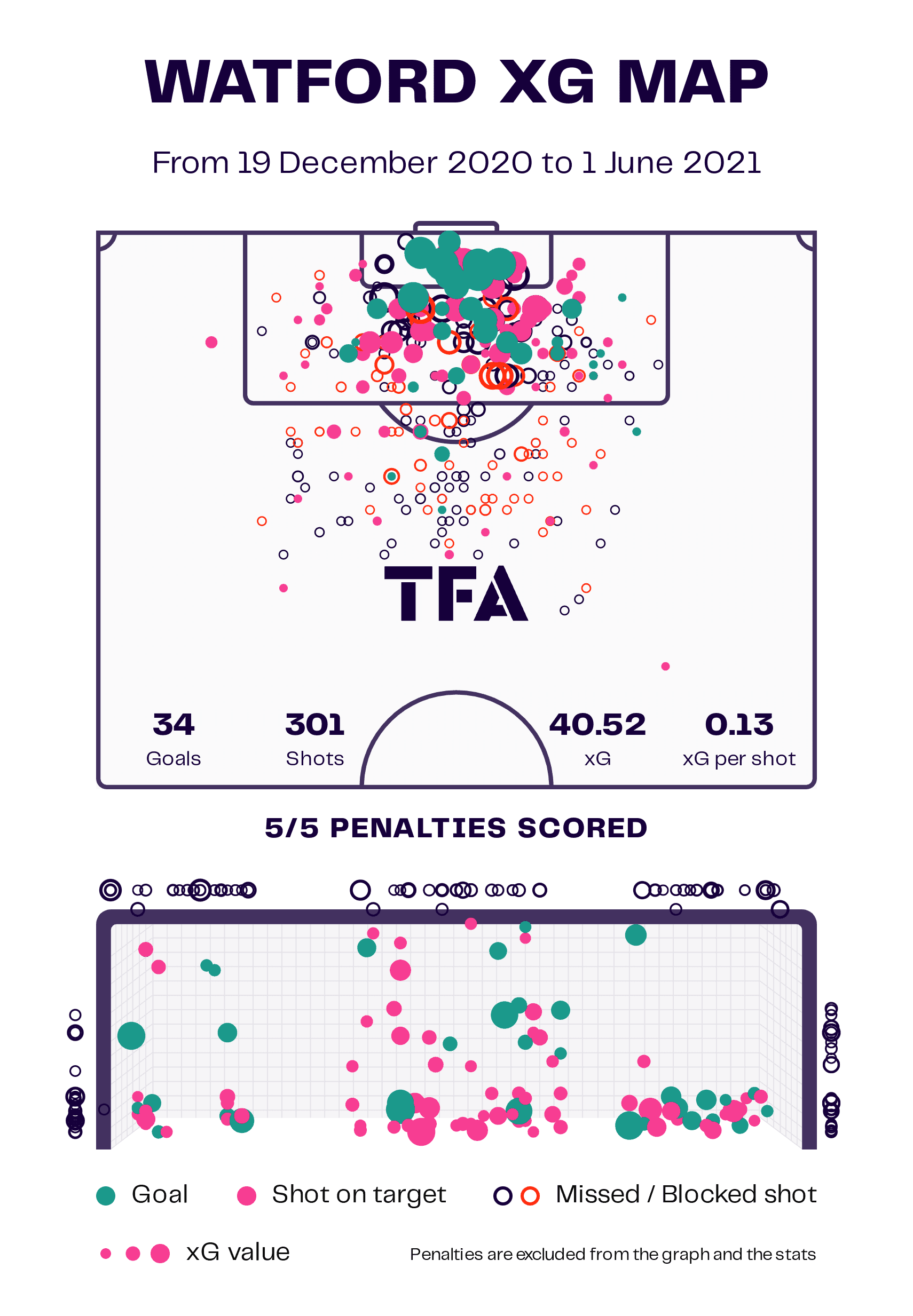
Muñoz guided his team from fifth to second, earning automatic promotion back to the promised land. Sadly for him, he remained in charge for just two months in the Premier League.
Blink and you’ll miss it – 2021/22
The 2021/22 season was almost identical to the chaotic fester of nonsense that was the 2019/20 campaign. A Spanish coach was sacked just a few games in after doing a wonderful job the year prior and then two more experienced managers came in and sunk the ship further.
After ten games in all competitions, Watford had scored just 10 goals — a goal a game — and were underperforming their xG of 11.96. On the other side, they had shipped 16 goals in all competitions as well as holding an ‘expected goals against’ of 11.15.
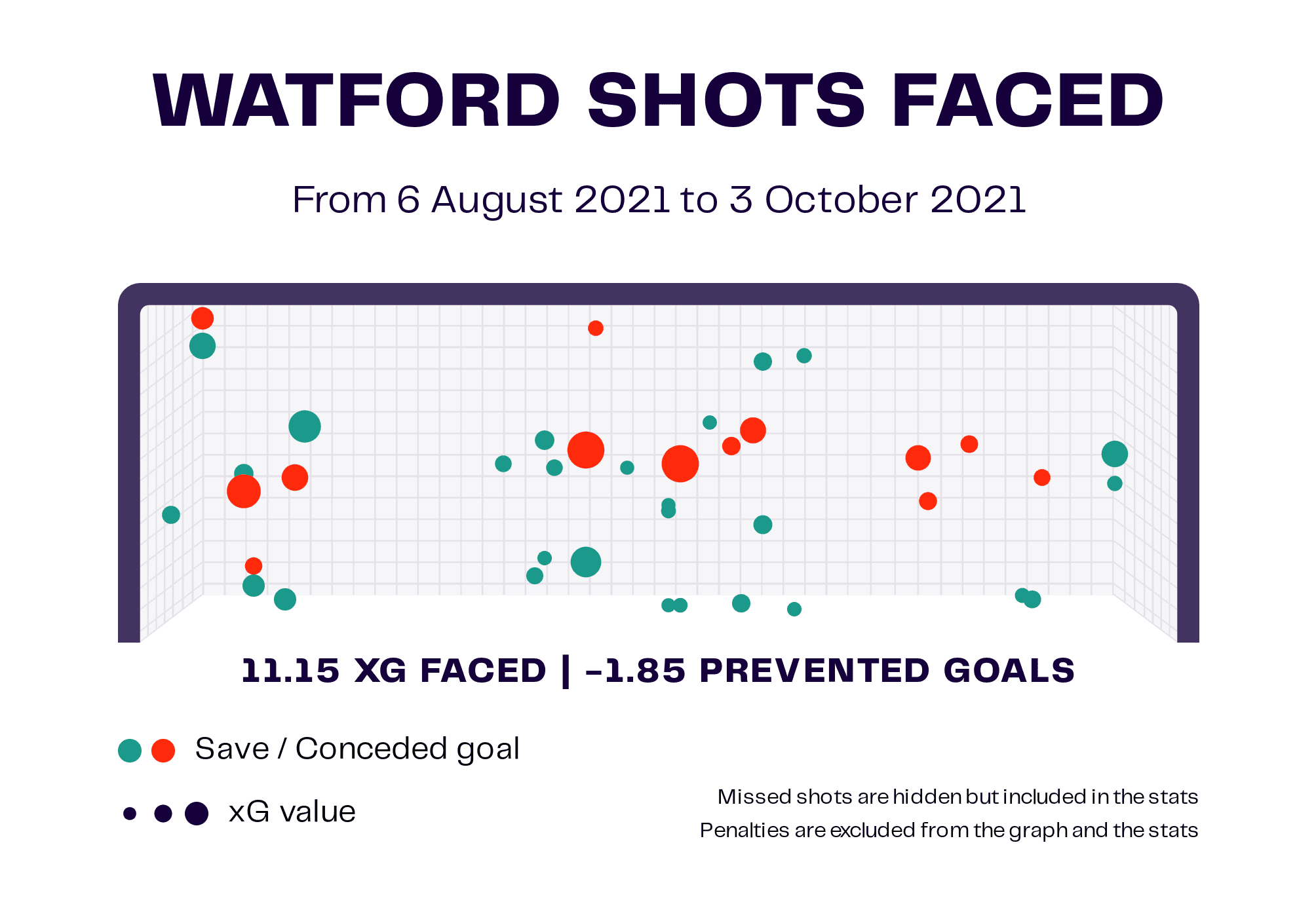
Nonetheless, Watford were still 14th by the time of his dismissal, leading many to believe that Pozzo had slammed down his iron first prematurely — once more. The decision was made even more questionable when Claudio Ranieri was the man chosen to succeed such an exciting young coach.
Ranieri was best known in England for his fairy-tale title win as manager of Leicester City but thinking rationally, he had failed more recently at Fulham, dooming the team to certain relegation in 2018/19.
Having played a high pressing, possession-based style for almost twelve months, it was all likely to be undone by the Tinkerman, notorious for his rigid defensive set-ups and preference for counterattacks over positional attacks. In almost all of the managerial changes since Gracia, there has been little to no succession plan or continuity.
In his first game in charge at Vicarage Road, titans Liverpool came to town. A change of shape for Watford was imminent from Ranieri as he switched from Muñoz’s 4-3-3 to a defensive-minded 3-4-3. Of course, no formation is defensive. It’s all about application, but the application from Ranieri left a lot to be desired.
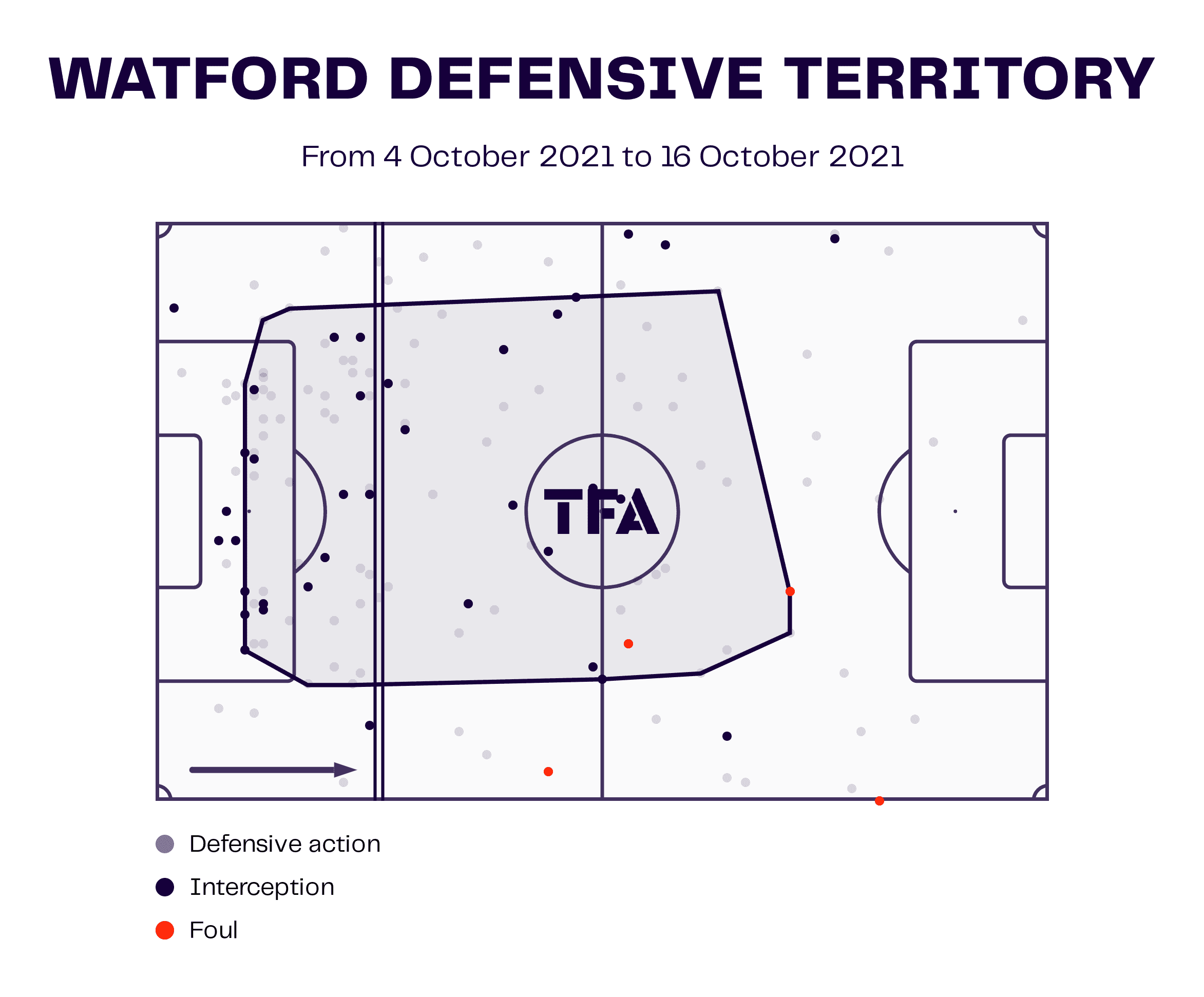
During the match, Watford rarely left the edge of their own penalty area, registering an xG of 0.58 from a measly six shots. The Hornets were mauled 5-0 and Ranieri found out pretty quickly that deploying such a deep defensive block wouldn’t work.
This may not come as a shock, but the veteran manager was dismissed after three months at the helm, but by the end, Watford were defending much higher up the pitch.
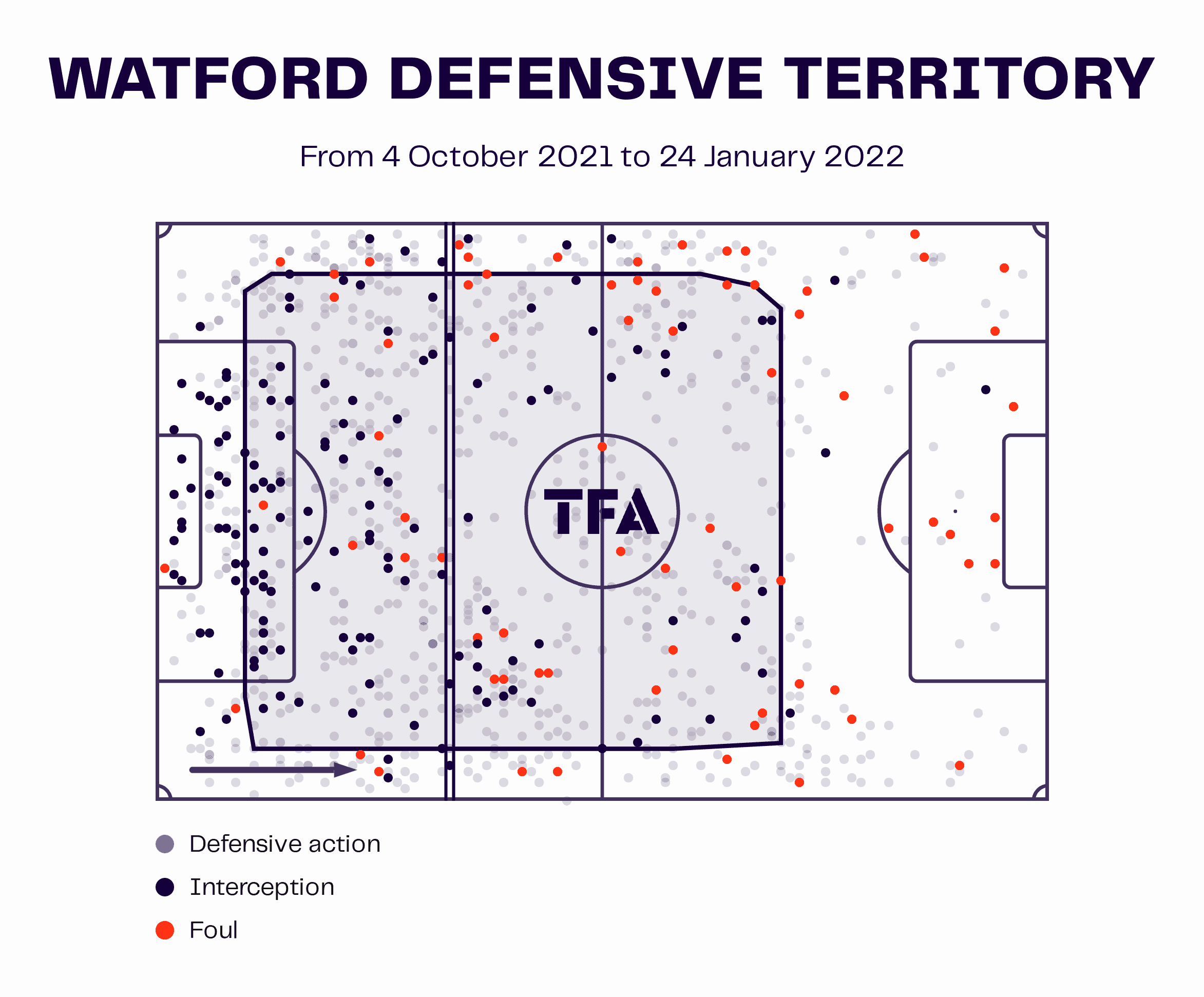
Ranieri left after 14 games in charge and won just two matches, with a meagre win percentage of 14.29. Interestingly, these two wins were Watford’s best of the season — a 5-2 thrashing of Rafa Benítez’s Everton and a 4-1 riot over Manchester United which saw Ole Gunnar Solskjær walk the plank.
Ranieri switched formation a couple of times, sifting from the 3-4-3 to the 4-4-2 to the 4-3-3 and the team began defending higher up the pitch. However, the same issues continuously arose during his stint in charge. Watford looked ill-structured, particularly defensively.
There were so many spells of games where the side would press high but there would be little to no unison between the players — some stepping forward too late, others not blocking passing lanes. Everything looked uncoordinated.
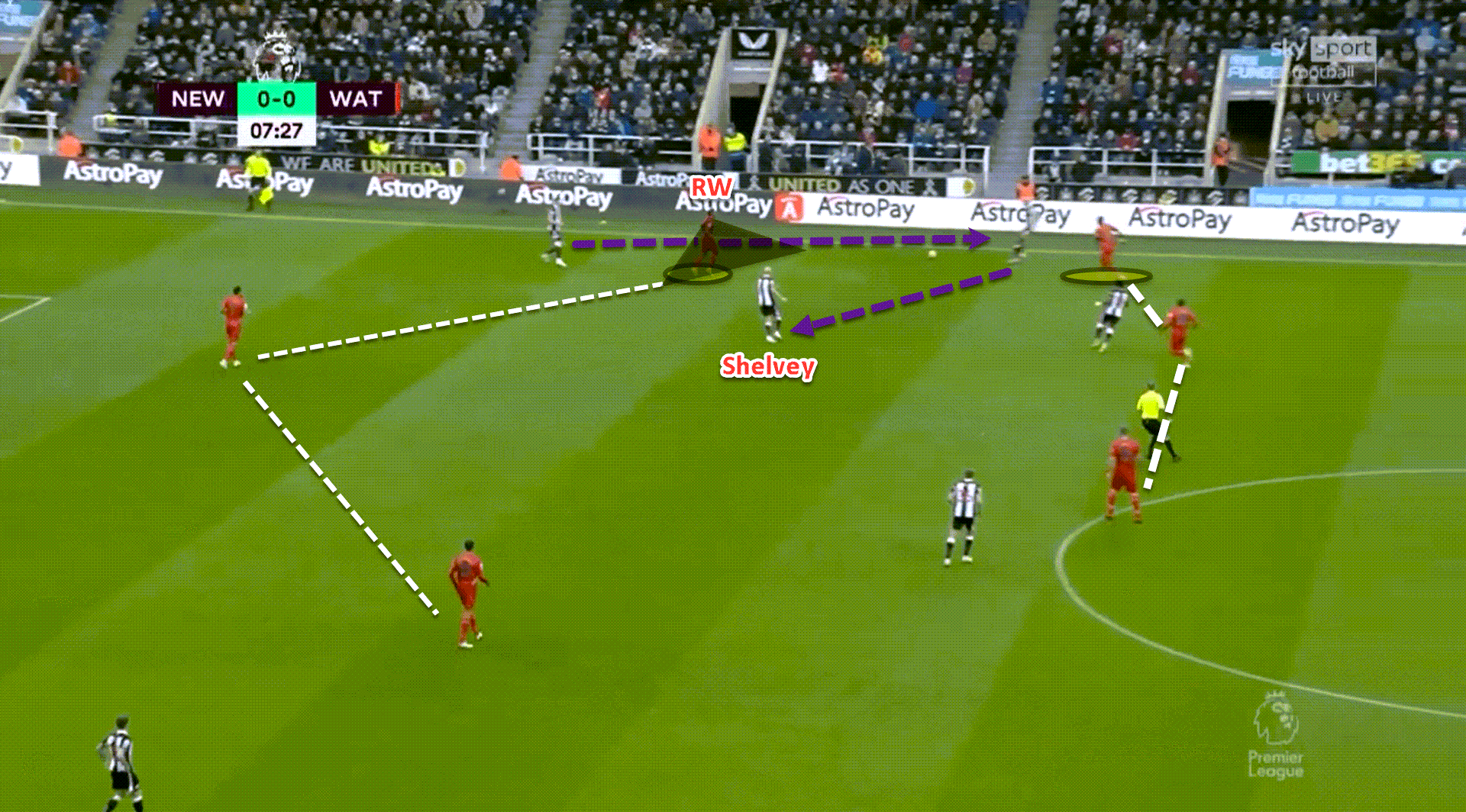
Here, Watford were pressing Newcastle in a 4-3-3 shape. Jonjo Shelvey is free to receive on the inside of the Hornets’ pressing trap. Nobody stepped up to close him down nor did the centre-forward drop off to press backwards, rendering the whole press pointless.
Ultimately, it was this lack of tactical cohesion which led Ranieri to get the chop. Surely Pozzo and his board would appoint someone with fresh ideas and a functional style of play? Well, the latter part was right.
Roy Hodgson answered Pozzo’s calls and became the seventh permanent head coach to sit in the Vicarage Road dugout in two and a half years, coming out of retirement to do so. Hodgson was always a reliable appointment for any club looking for a defensive-minded coach who would bring structure at the back.
Things couldn’t get worse from Ranieri’s short-lived reign…could they? Yes, they could. In four more games than his predecessor, 18 in total, Hodgson won just twice too, meaning Watford had four league victories across two managers, spanning from October to the end of the season.
Tactically, the former England boss tried to implement the same style that had been successful for him at both Fulham and Crystal Palace: a 4-4-2, focusing on direct balls from the back and a compact defensive shape.
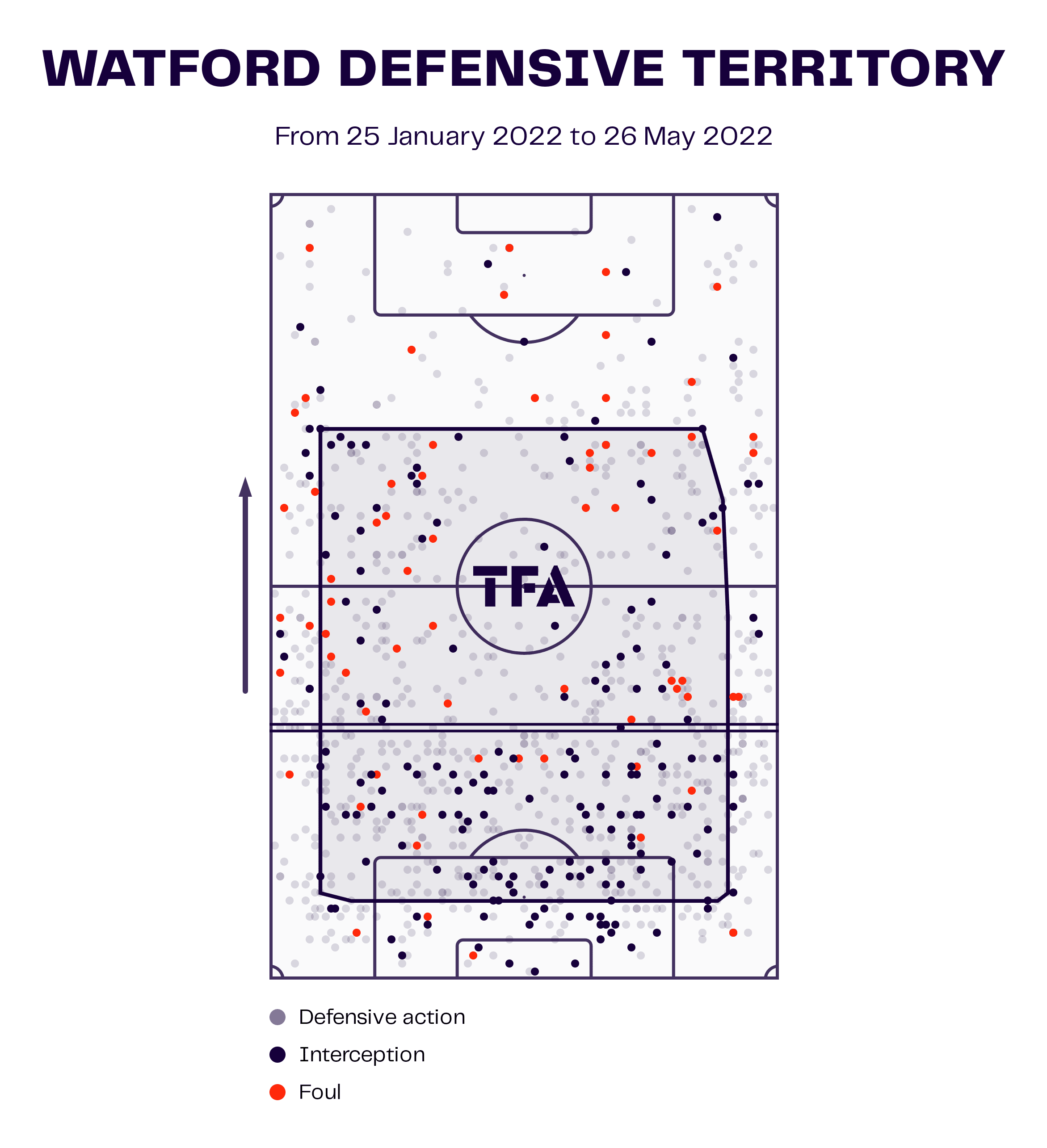
The average defensive line height was incredibly deep under the veteran. Watford primarily defended in a low block, initially in a 4-4-2 but later in a 4-3-3 when he needed an extra man in the middle of the park.
If you’ve watched any team under Hodgson, the style certainly won’t be a surprise to you. The now-retired manager wanted his team to stay really compact in a deep block, shifting constantly across the pitch depending on the position of the ball.
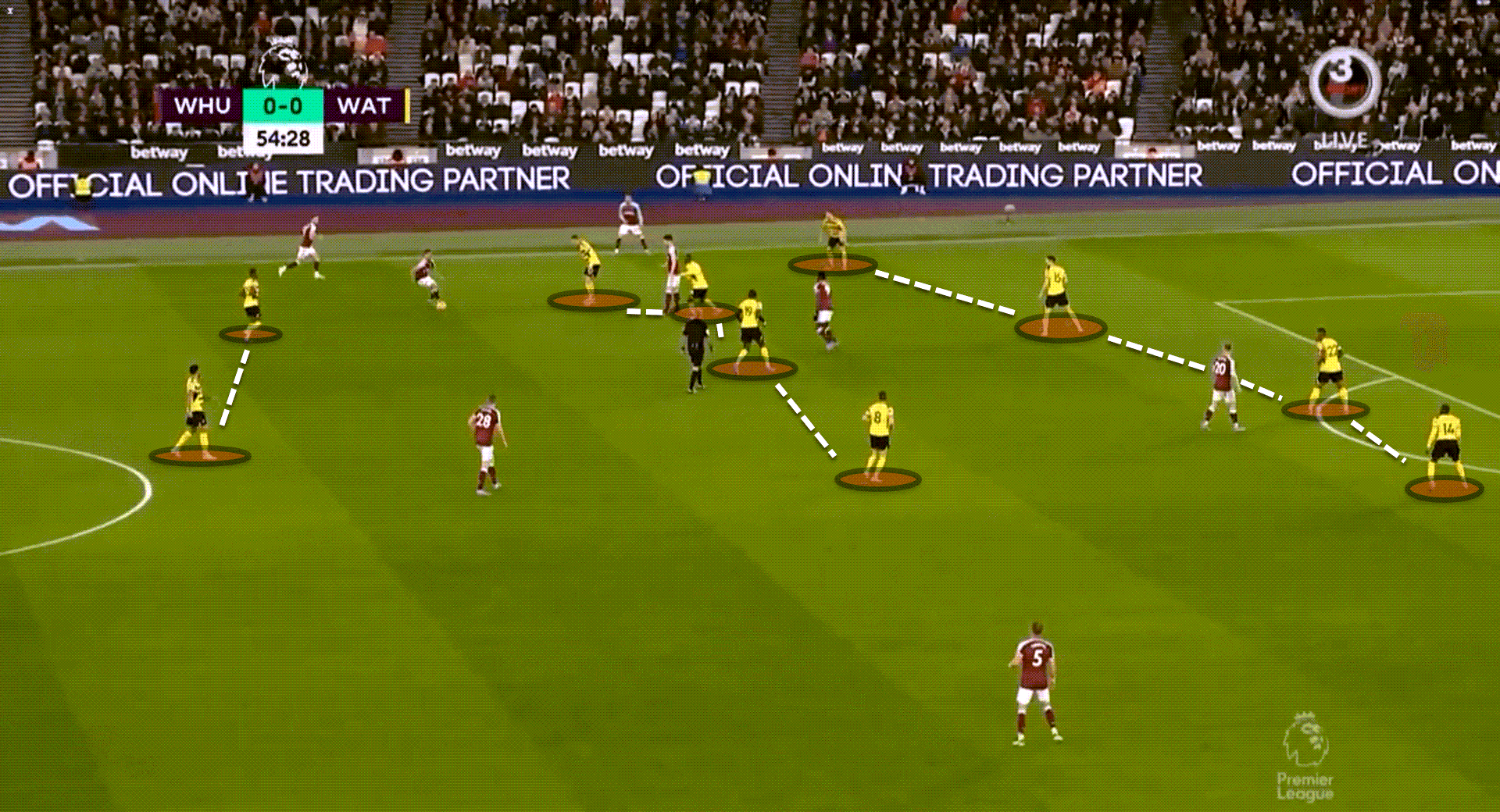
Ben Foster discussed this last season in the thick of Hodgson’s tenure:
“The way Ray (Lewington, Hodgson’s assistant) and Roy (Hodgson) like to do things is when the ball is on one side of the pitch, we’ll get across as a unit. When it goes over the other side, we have to bust a nut to get over there.”
I think he meant ‘bust a gut’…
Defensively, it was still shambolic. No low block or compact shape can make up for a lack of desire and quality. While Watford kept more clean sheets under Hodgson than Ranieri or Muñoz, they still ended the campaign with the third-worst defensive record in the Premier League.
What was even worse, though, was their attacking record, which led many supporters to turn on the then-74-year-old quite quickly.
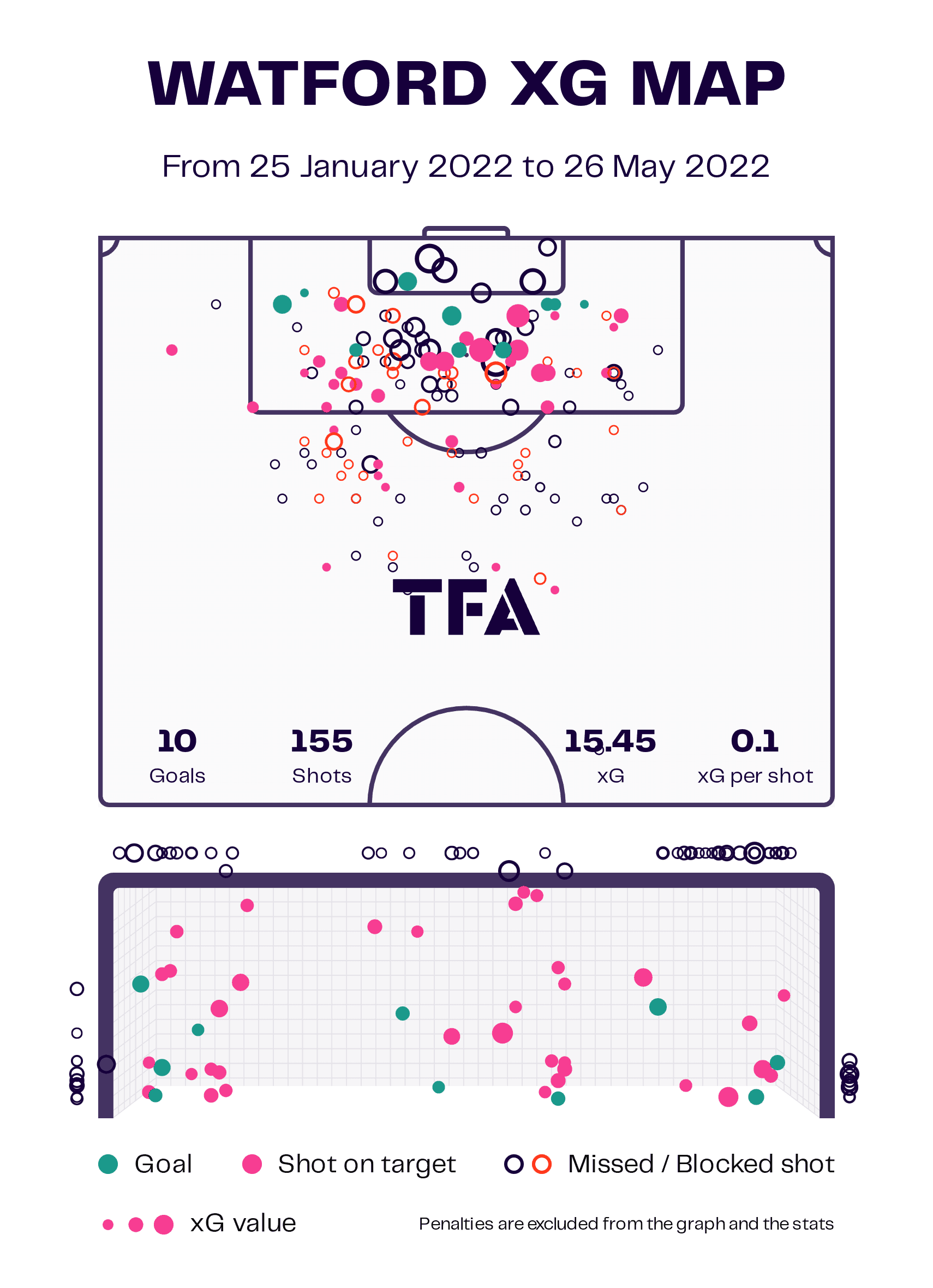
10 goals scored in four months and an xG of 15.45. They weren’t creating enough chances and weren’t taking the opportunities that did fall to them.
It was a disaster of seismic proportions yet again. Hodgson, as expected, stood down at the end of the season and went back into retirement like Yoda fleeing to Dagobah after everything crumbled around him.
Although, to Hodgson’s credit, he wasn’t actually sacked and so survived Pozzo’s guillotine.
Nevertheless, the Hornets were relegated yet again, forced to endure another campaign, or potentially more, battling it out in England’s finest slogfest, the Sky Bet Championship.
It was yet another new dawn for the club, and having consecutively appointed two veteran coaches, the club made a call to bring a young, vibrant manager to the dugout. Would he finally be the man to put a wrench in the wheel of the managerial merry-go-round at Vicarage Road?
To be continued… – 2022/23
No, is the simple answer to that. Having done a really impressive job with environmentally friendly Forest Green Rovers, getting the Green promoted from League Two to League One, Watford decided to give Rob Edwards the chance to shine. By chance, we mean two months.
In fact, in his first eight games, Watford had just one loss. After 10, this increased to three.
Edwards came in and integrated a 3-5-2 formation which hadn’t been seen for almost two years since Ivić’s time at the helm.
Watford were back again as a high-pressing team, looking to apply pressure as close to the opposition’s goal as possible.
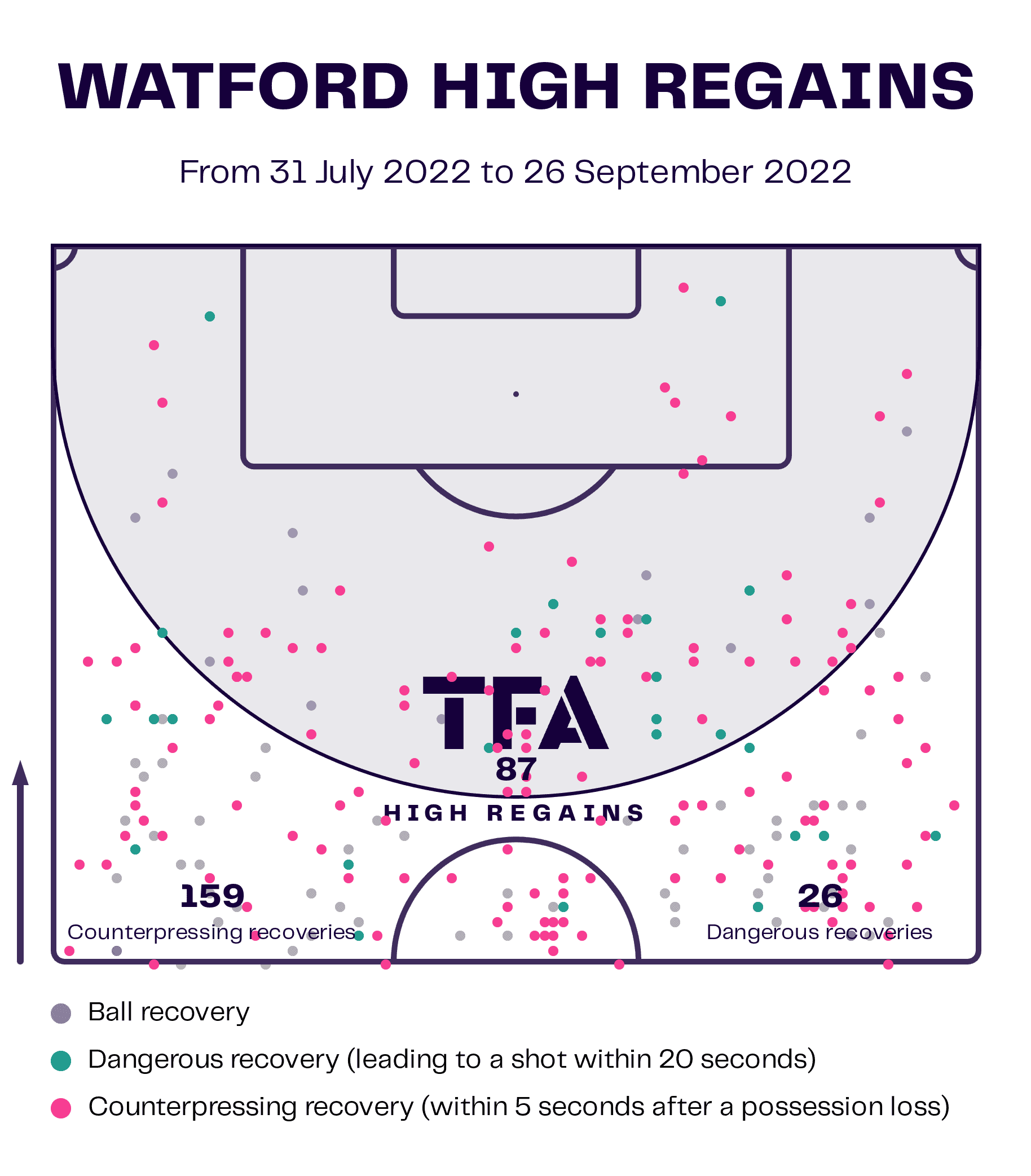
During his short stint of 10 games, Watford registered 87 high regains, 159 counterpressing recoveries and 26 dangerous recoveries.
The biggest downfall for Edwards was the lack of opportunities in front of goal that the side created. Watford scored 10 non-penalty goals in those 10 matches and were pretty accurate in terms of their xG. But for a team pushing for promotion, less than a goal a game isn’t good enough.
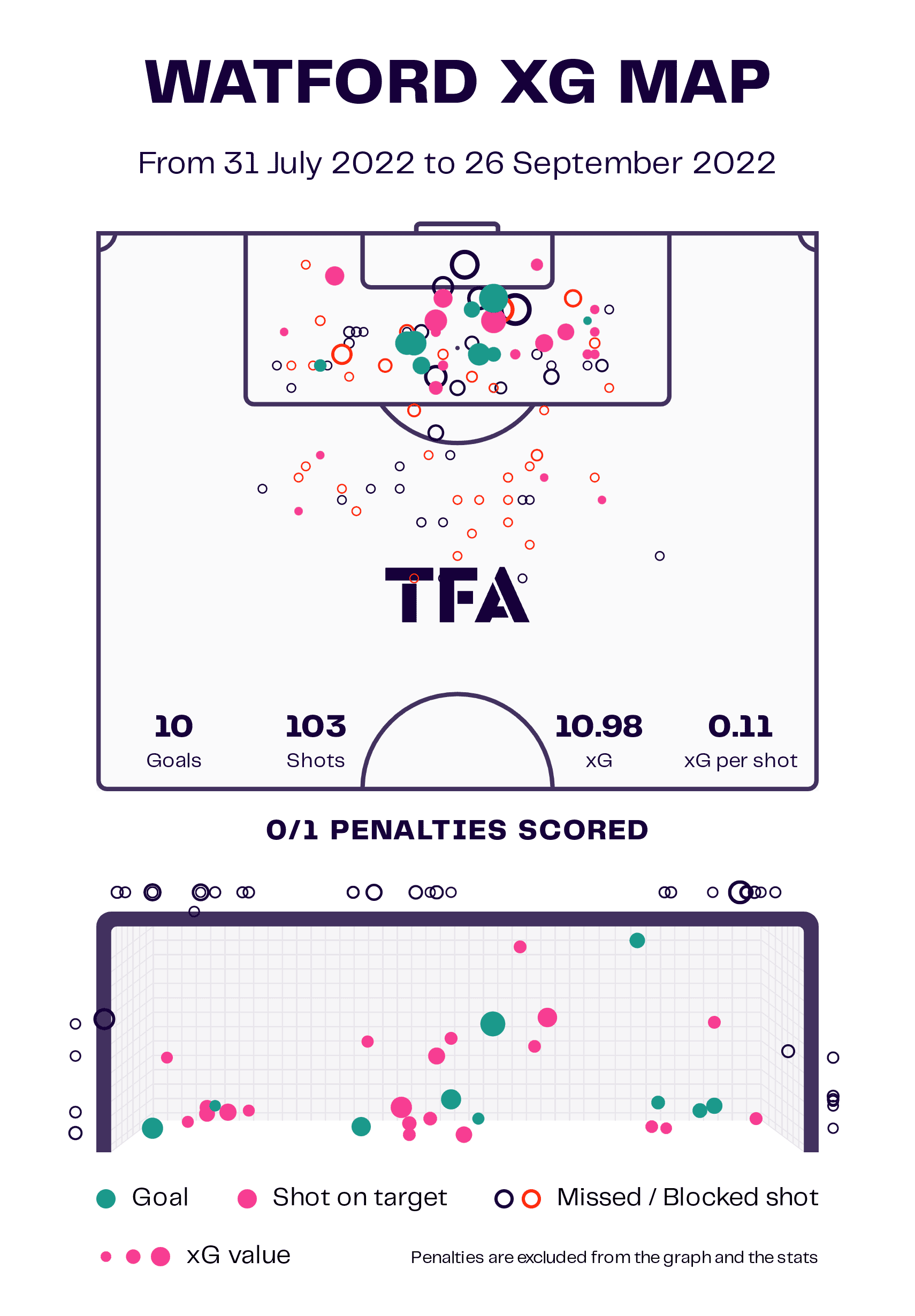
Five of Edwards’ 10 games ended in a draw. A better goalscoring record would have seen them get over the line in a few of these matches and could’ve even saved his bacon.
Nonetheless, Edwards was old news. Two months after the season began, he was unemployed again and Croatian legend Slaven Bilić was tasked with trying to steer the ship in the right direction and improve Watford’s goalscoring record.
Bilić ditched the back three used by Edwards straight away, opting for a back four as he was known for during his time at West Ham United. In an interview shortly after taking over, Bilić explained this decision:
“We put them in a shape where they feel most comfortable and in their natural positions where I think, or we think, that they can give Watford their best.”
The former Croatia head coach did improve the side in attack ever so slightly as the Hornets scored 28 goals in his 26 matches in charge, 1.08 goals per 90 as opposed to 1 per 90 under Edwards.
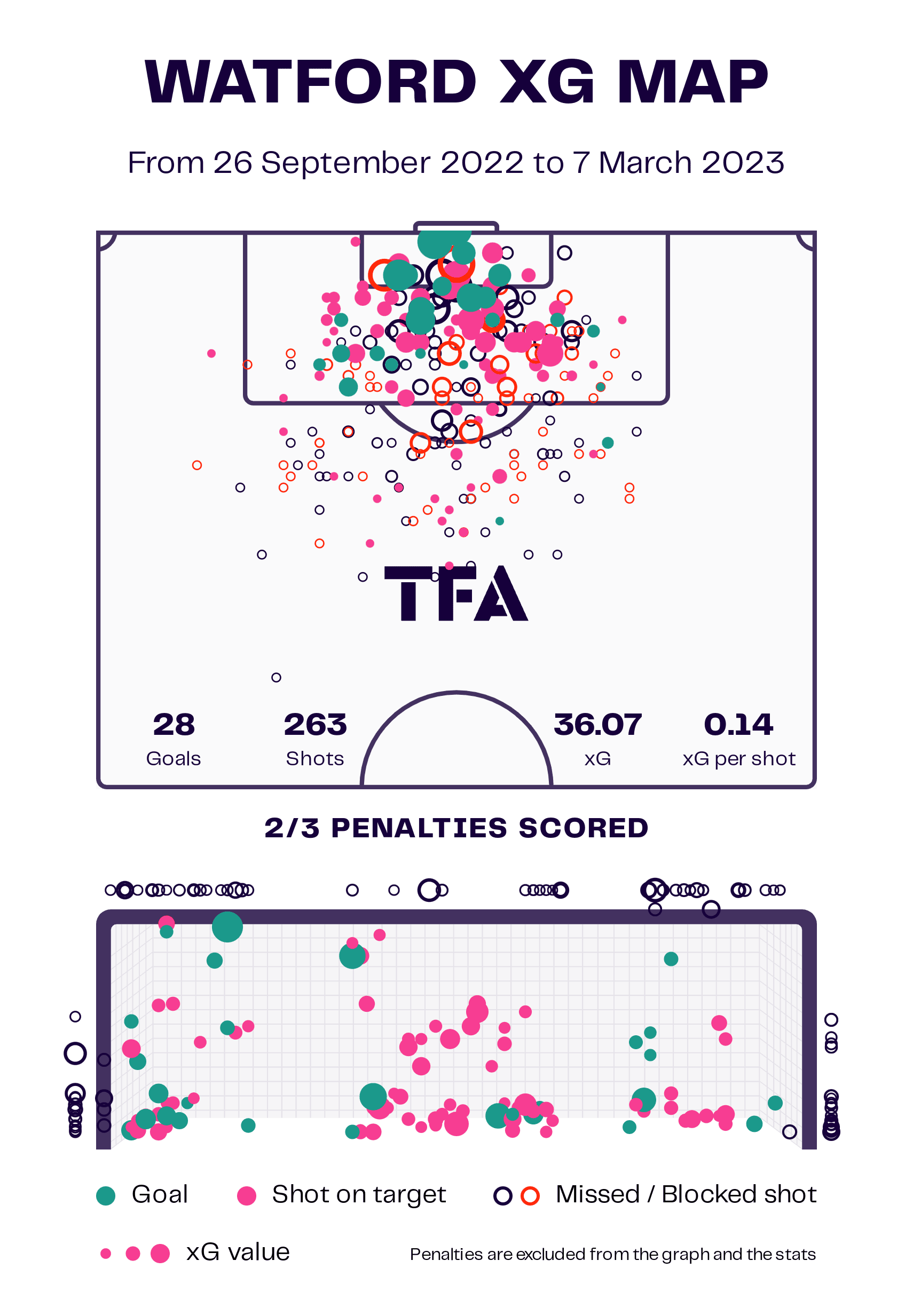
However, it still wasn’t a significant enough improvement. Watford were underperforming their xG by such a vast amount and these chances were costing them valuable points.
Furthermore, things didn’t improve defensively. Despite a change of shape, Watford were conceding more and more goals. Over Bilić’s reign, Watford allowed 29 goals in all competitions and an xG 27.37.
Watford had a net positive xG difference but in reality, Bilić’s tenure saw the team concede more than they scored. And we’ll let you guess how the chapter ended.
Conclusion
You can understand the frustration of the fans at the board. There has been no succession plan when relieving managers from their duties as well as no clear tactical identity that the club wants to focus on.
From Gracia to Muñoz to Ranieri to Hodgson to Bilić and now to Chris Wilder, the appointments follow no clear pathway. Pozzo hasn’t planned out how the book is supposed to finish. He seems to be making it up as he goes along.
Wilder is now in charge – an excellent tactician with a love of overlapping centre-backs in a back three. He was highly successful at Sheffield United and given the right tools, he could take Watford back to the Premier League this season. Unfortunately, there seems to be an air of inevitability about how his chapter ends.

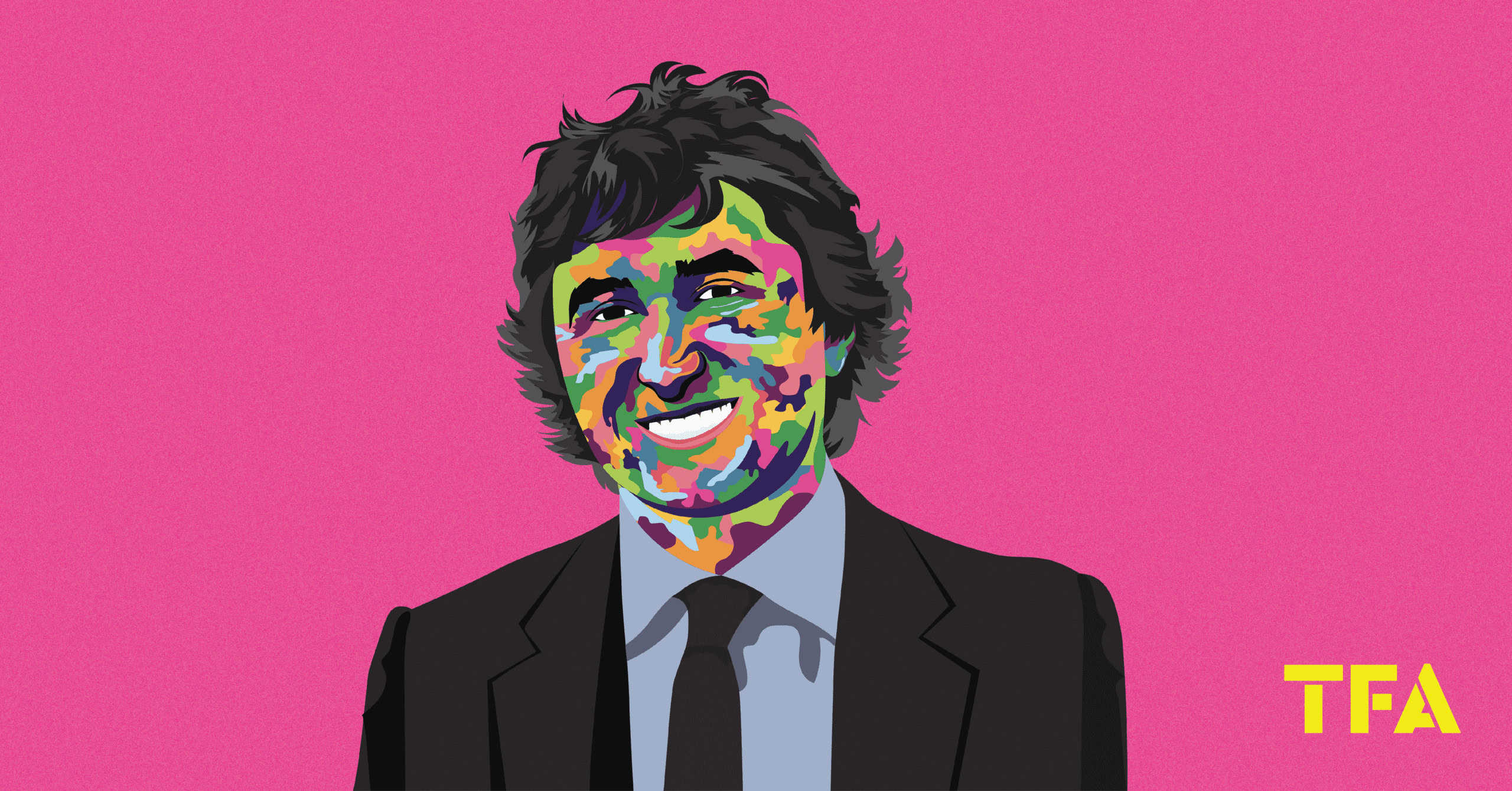




Comments